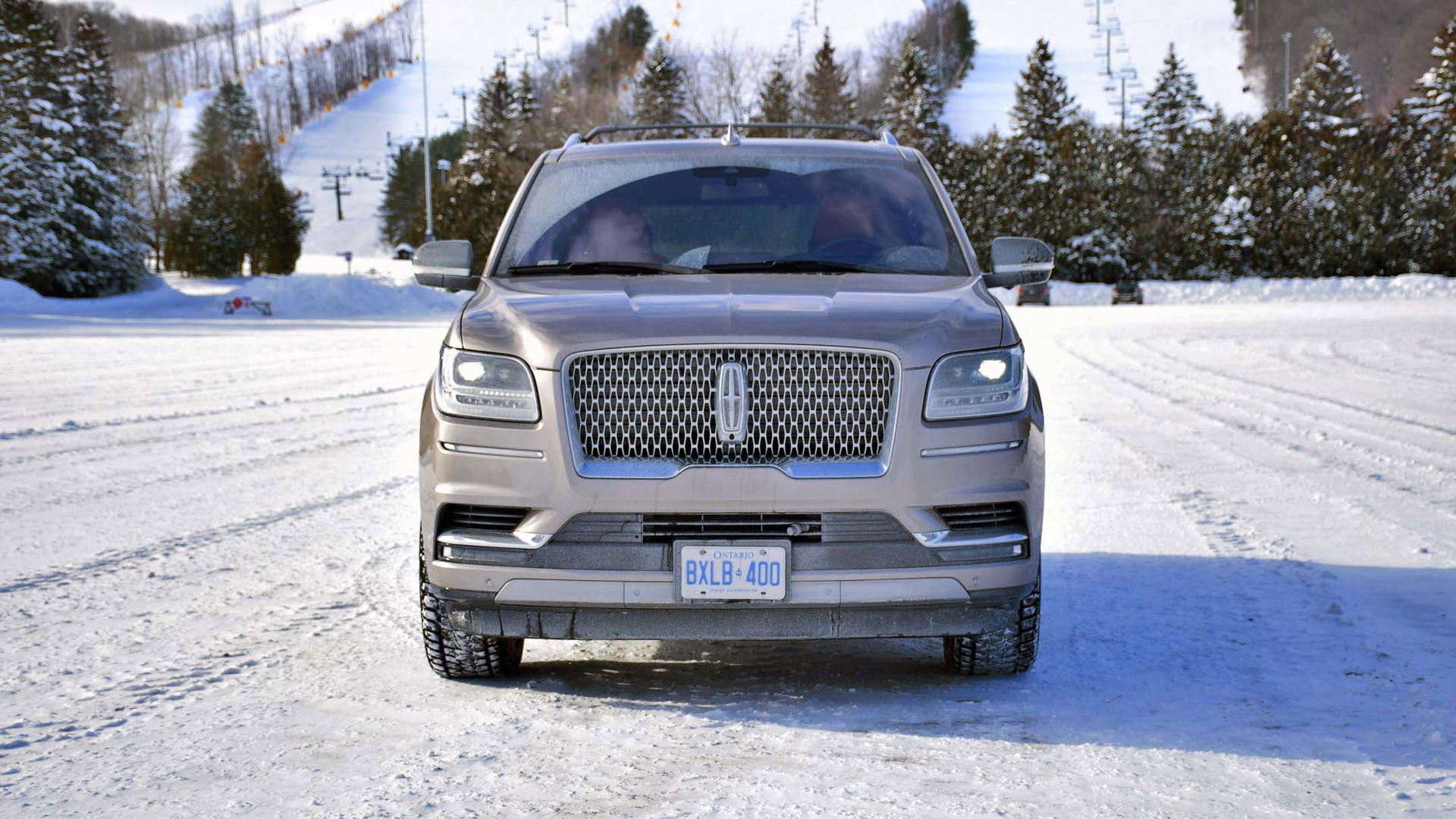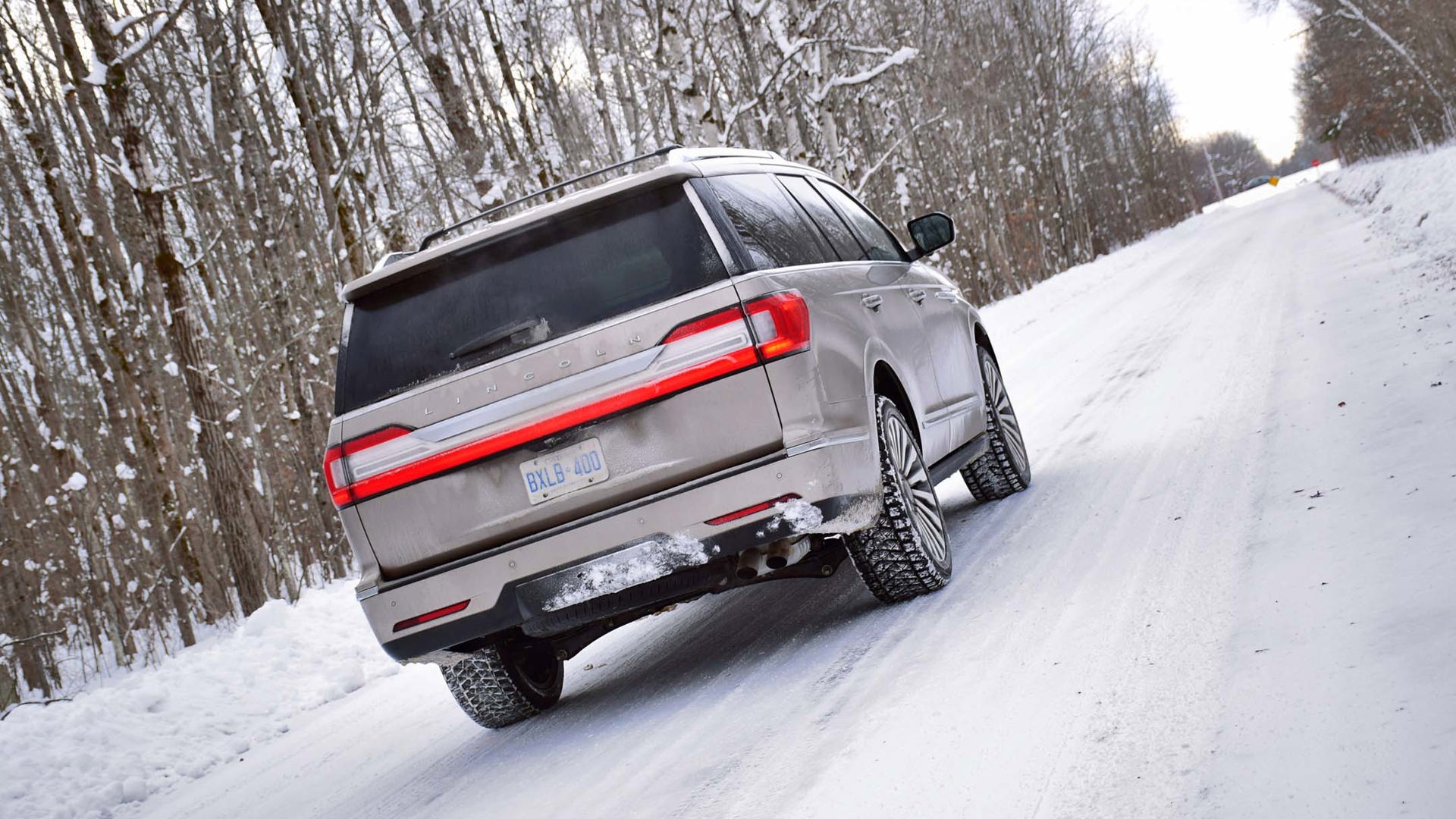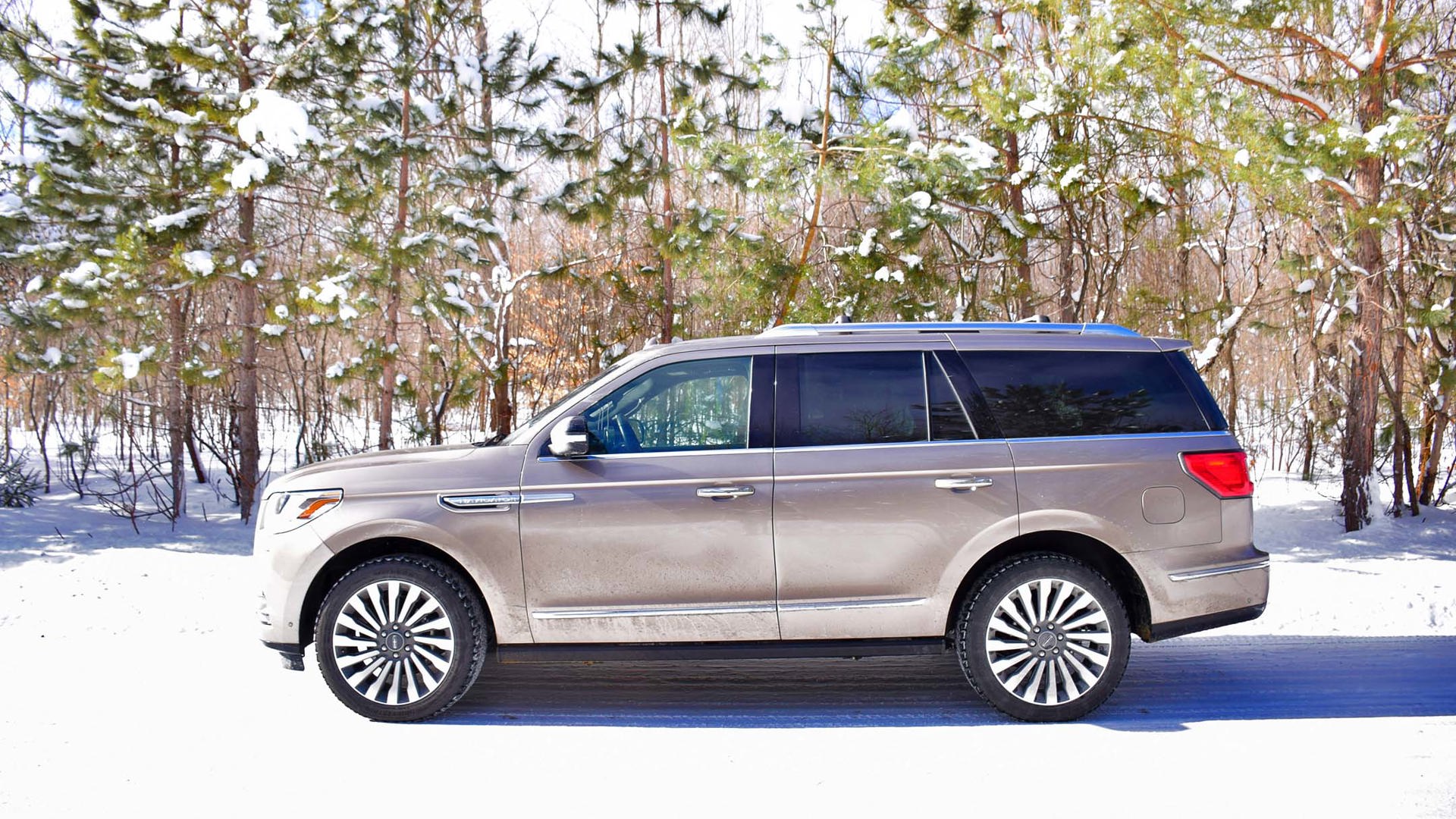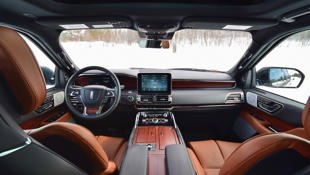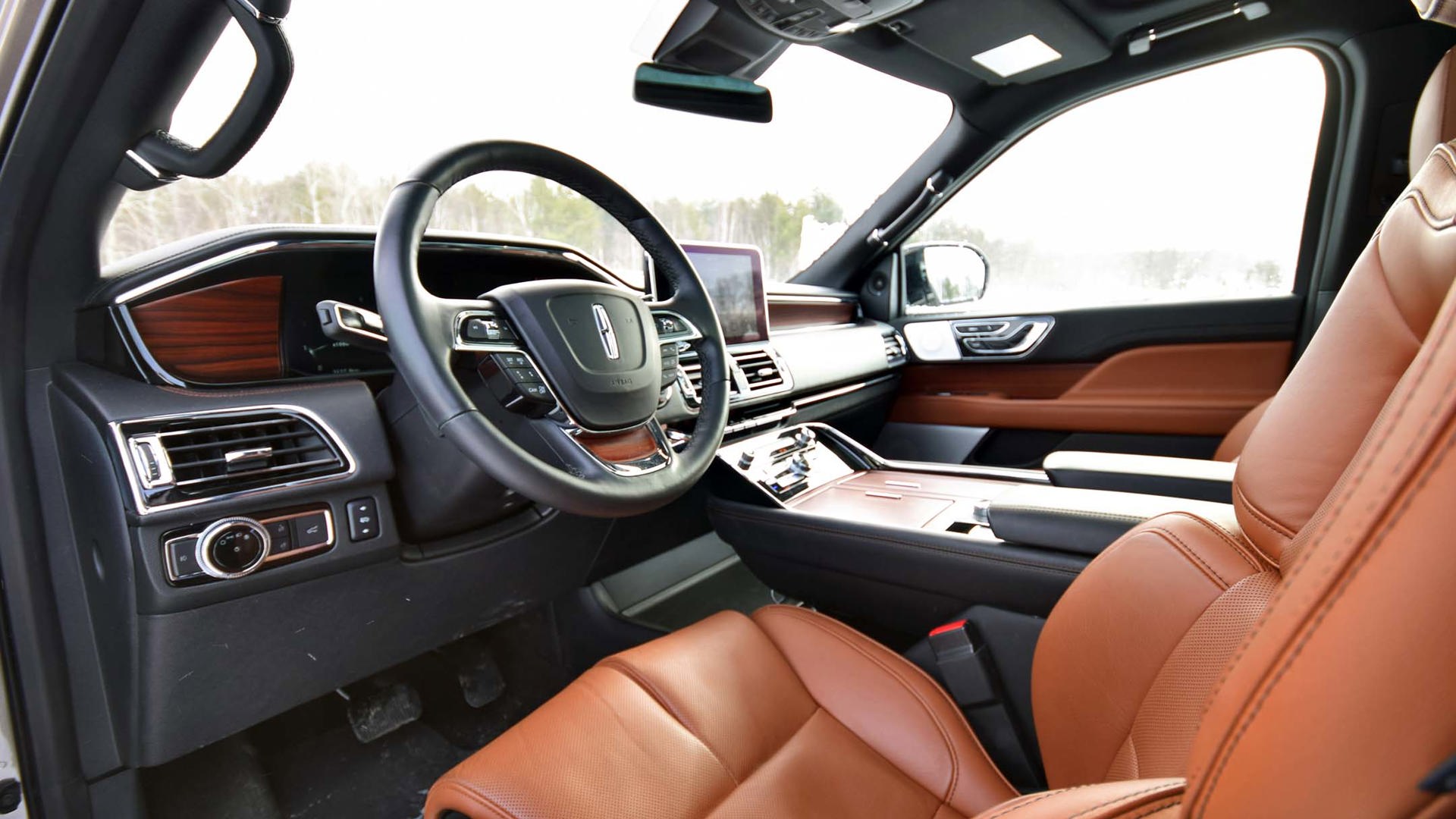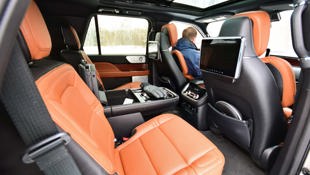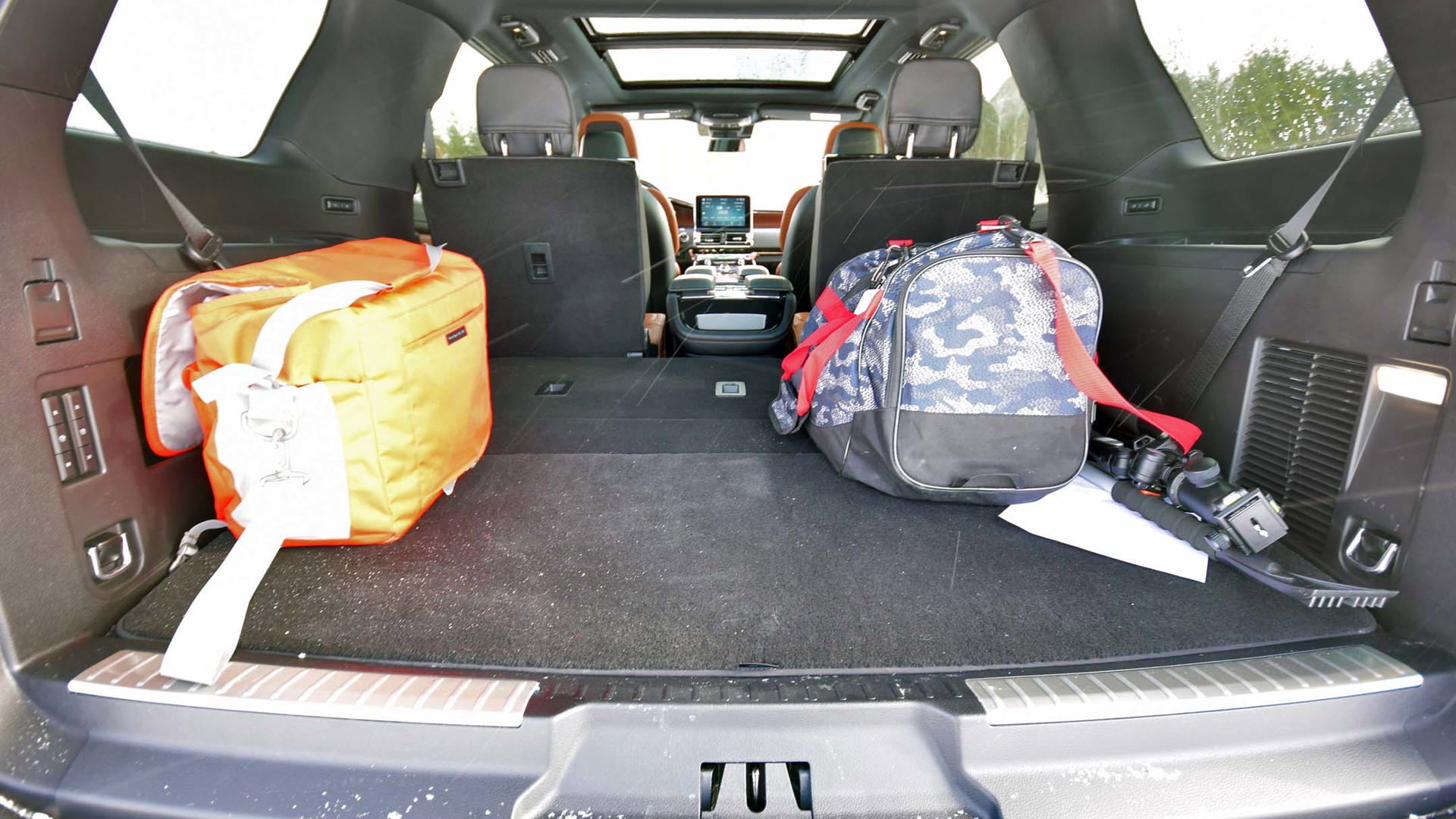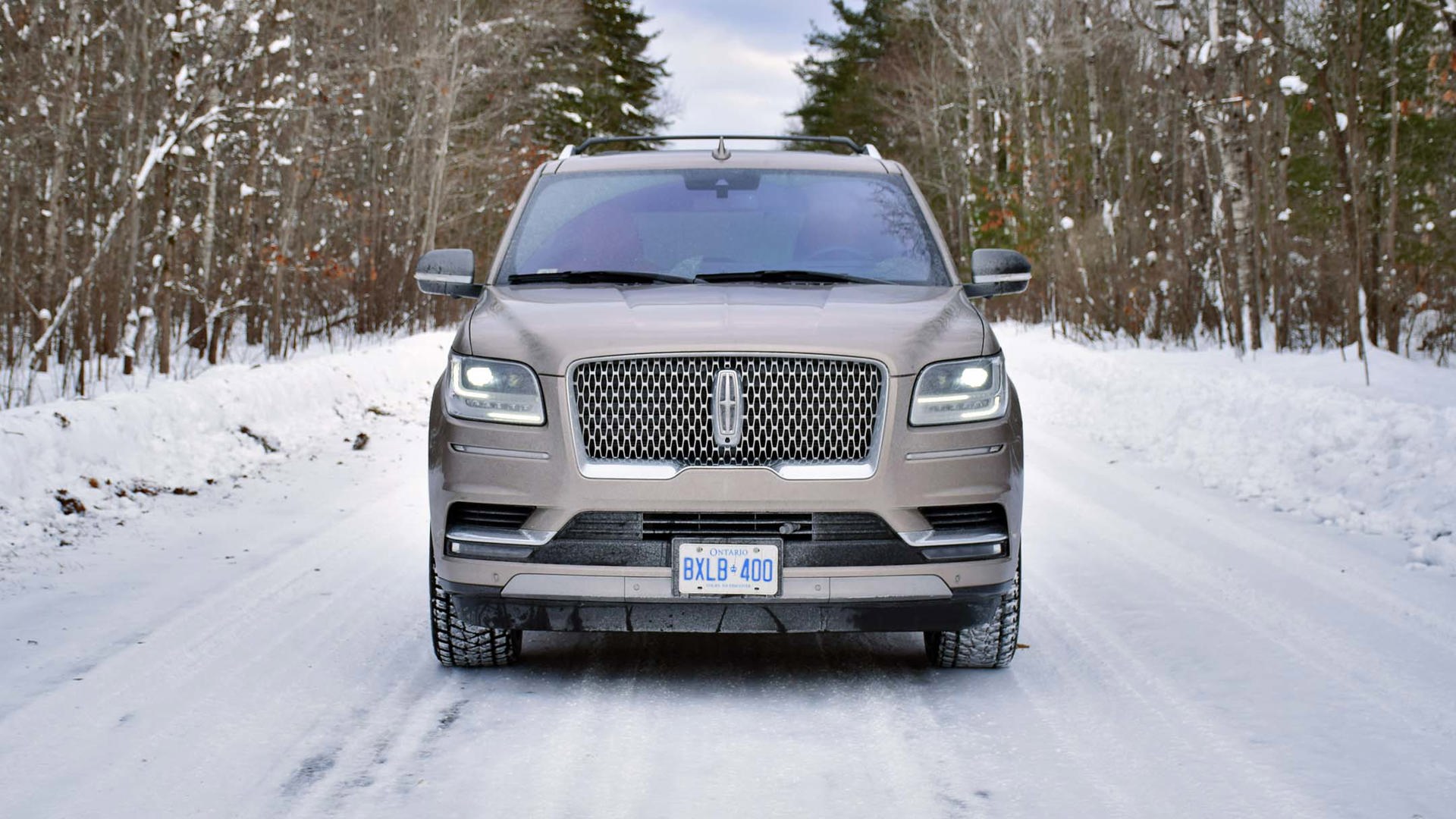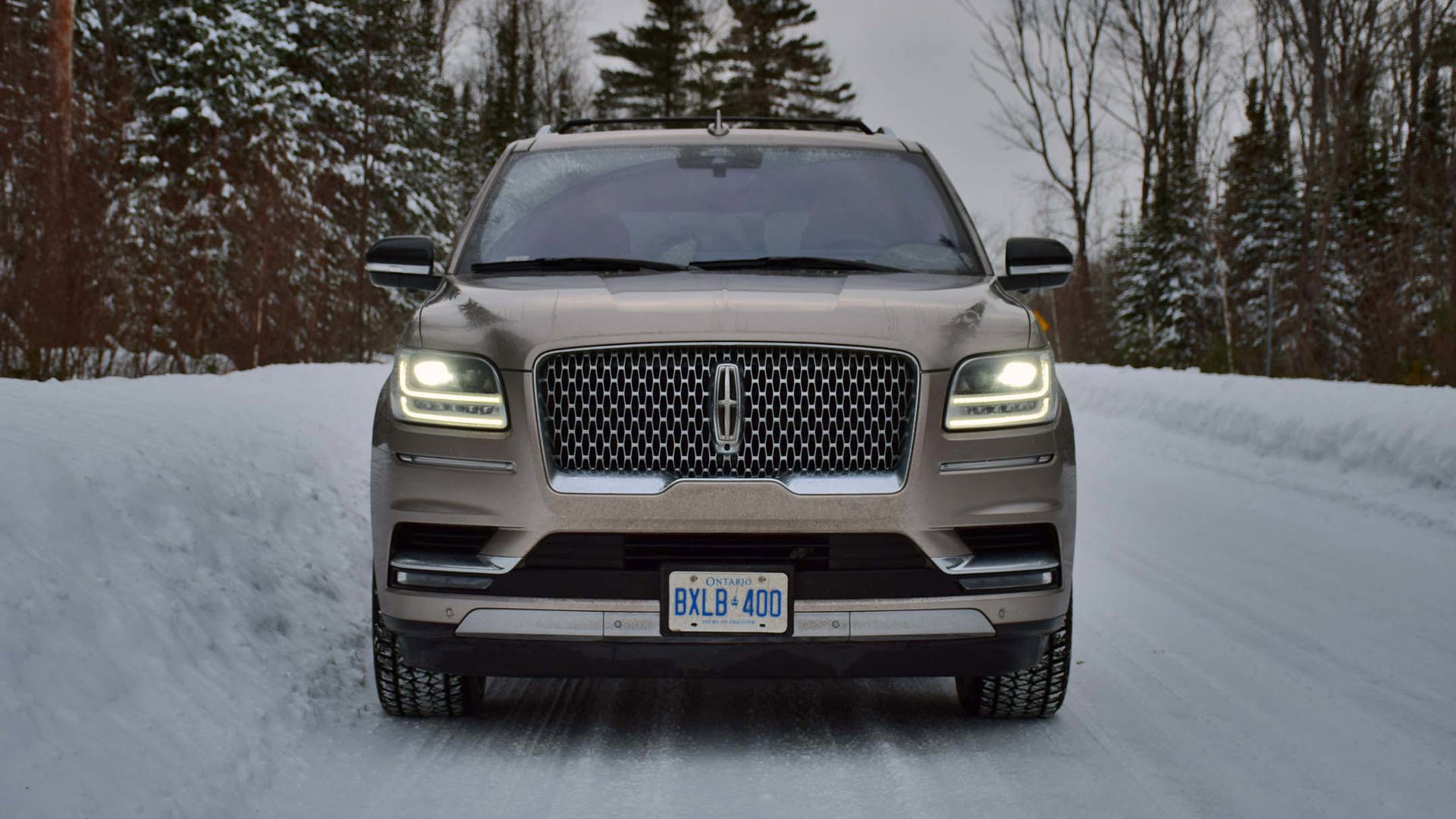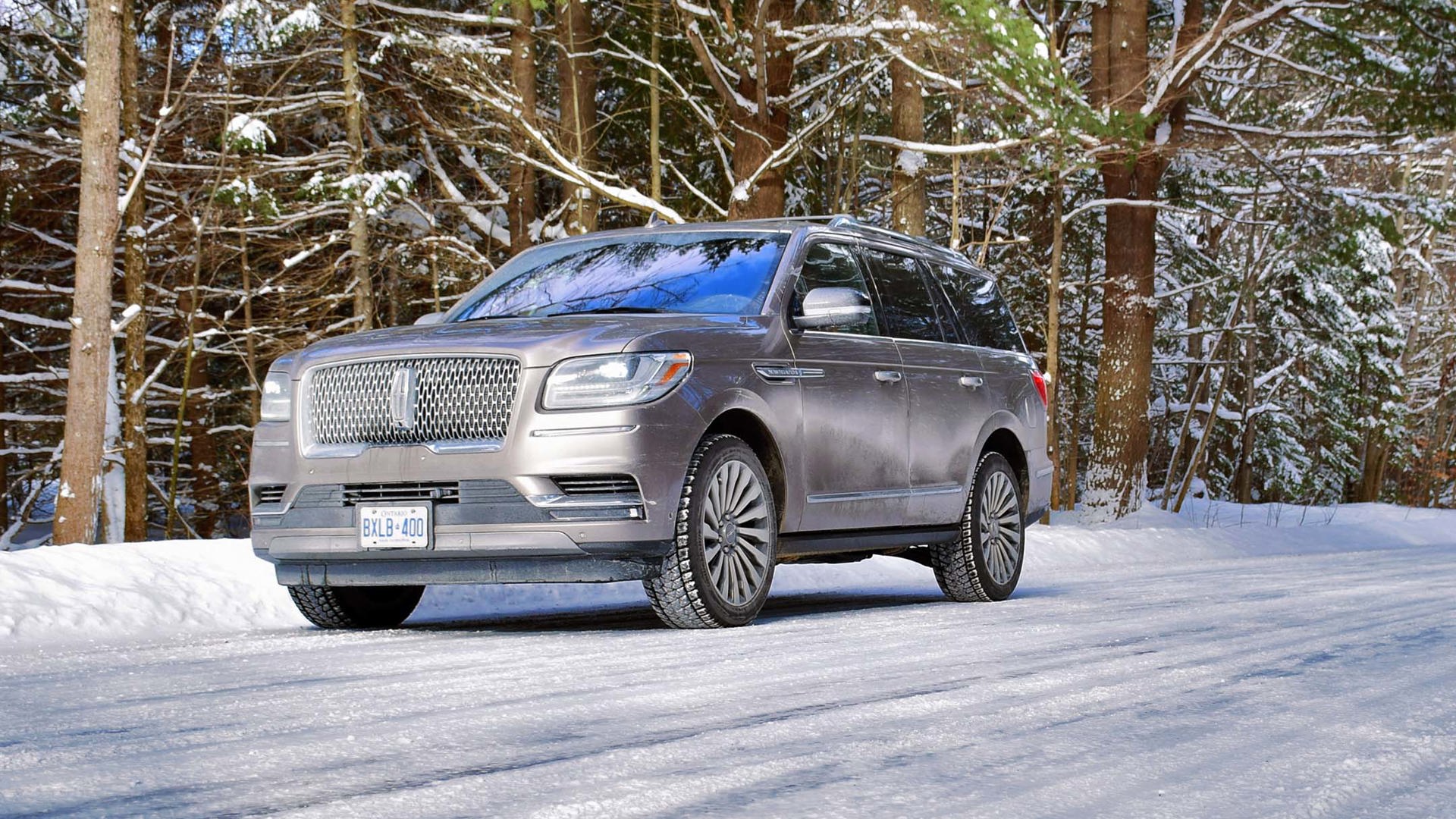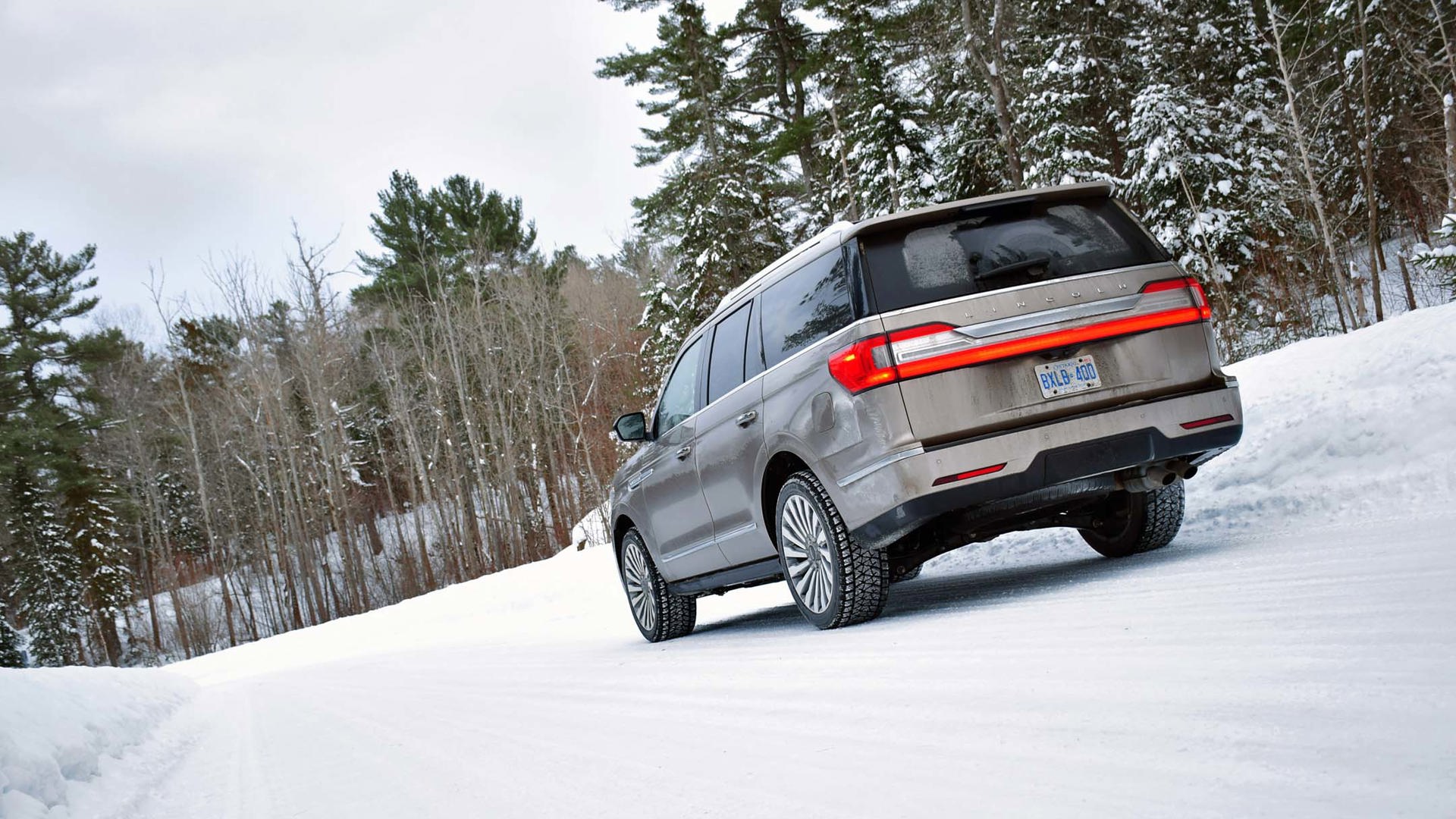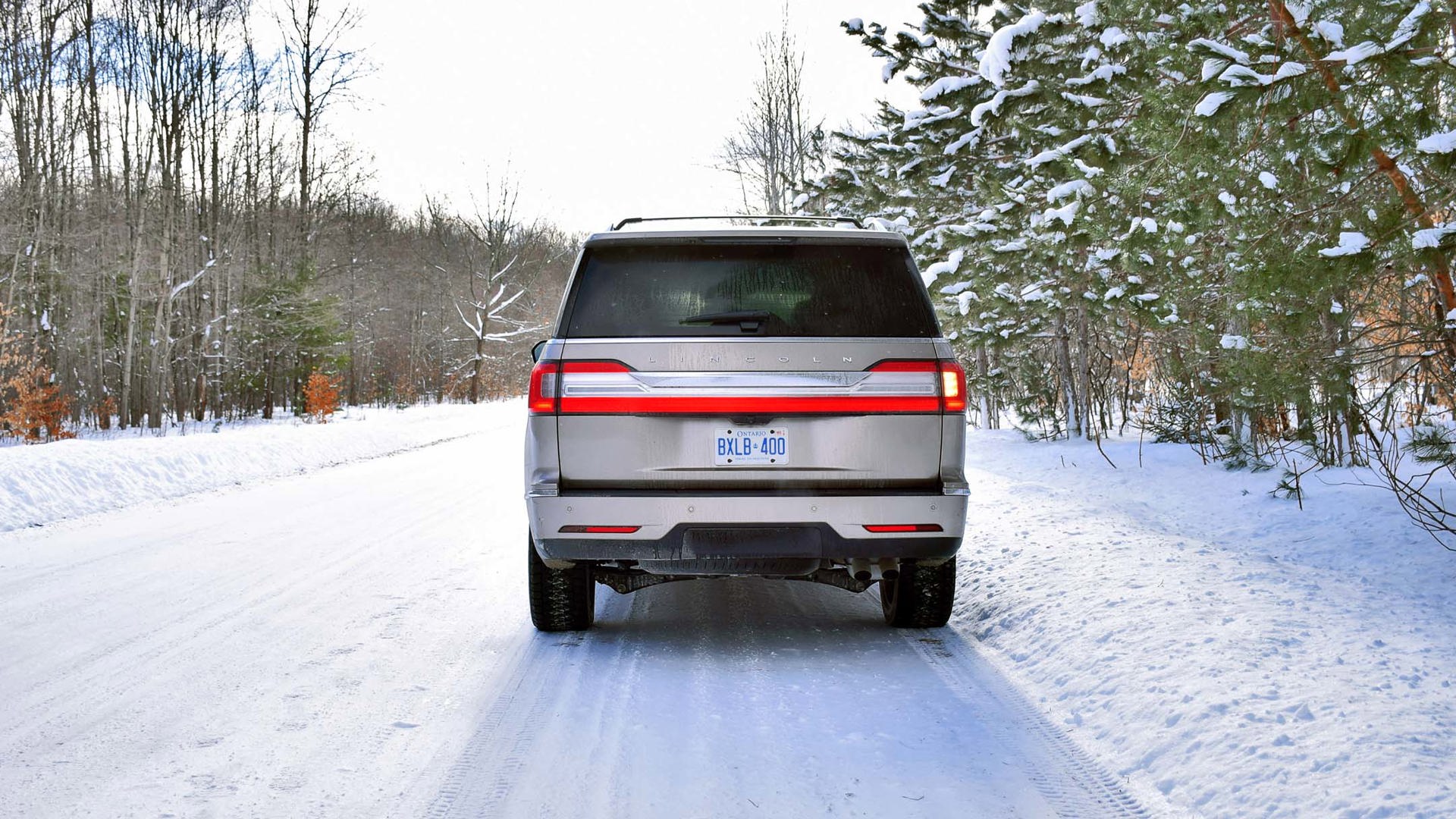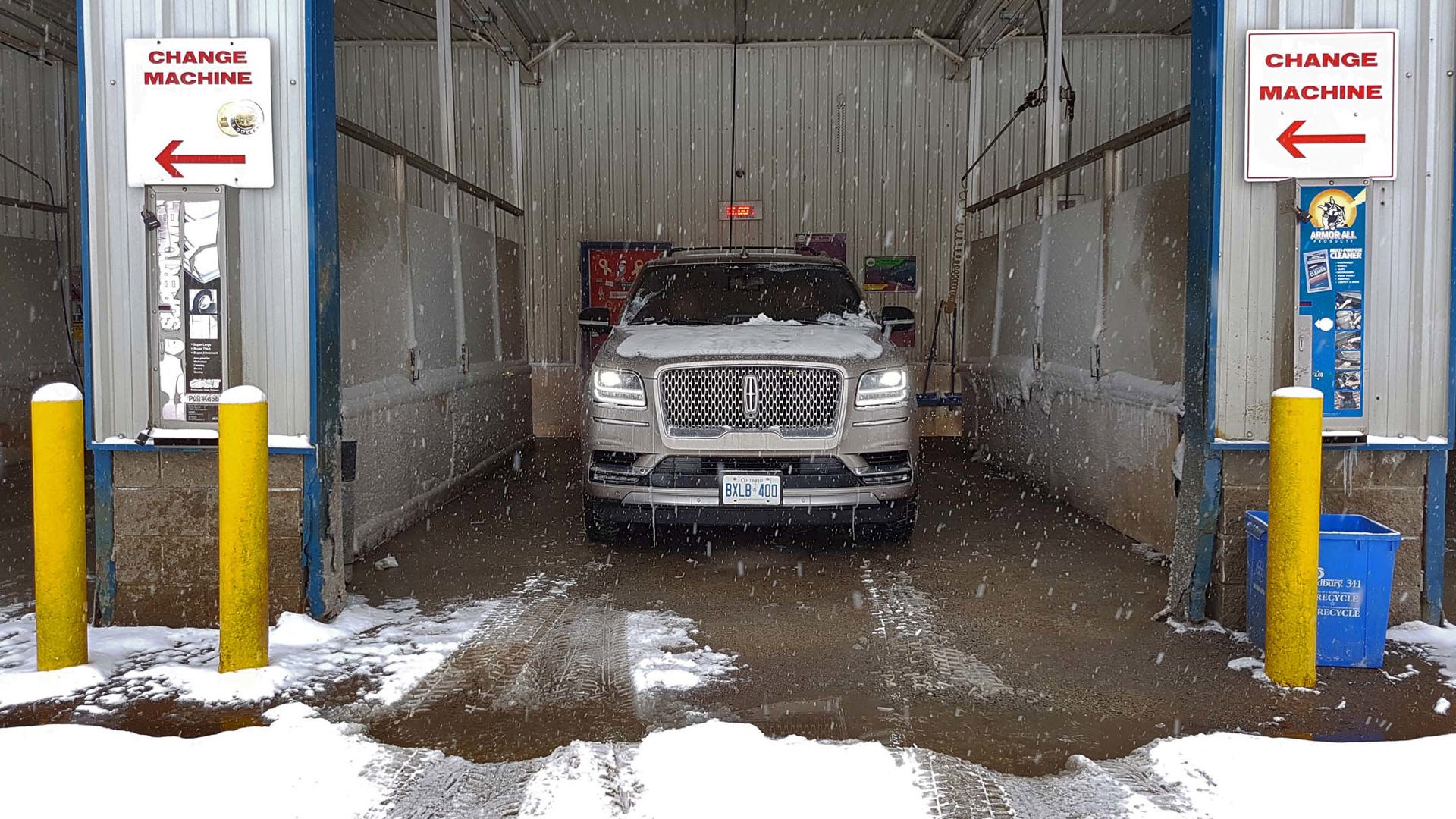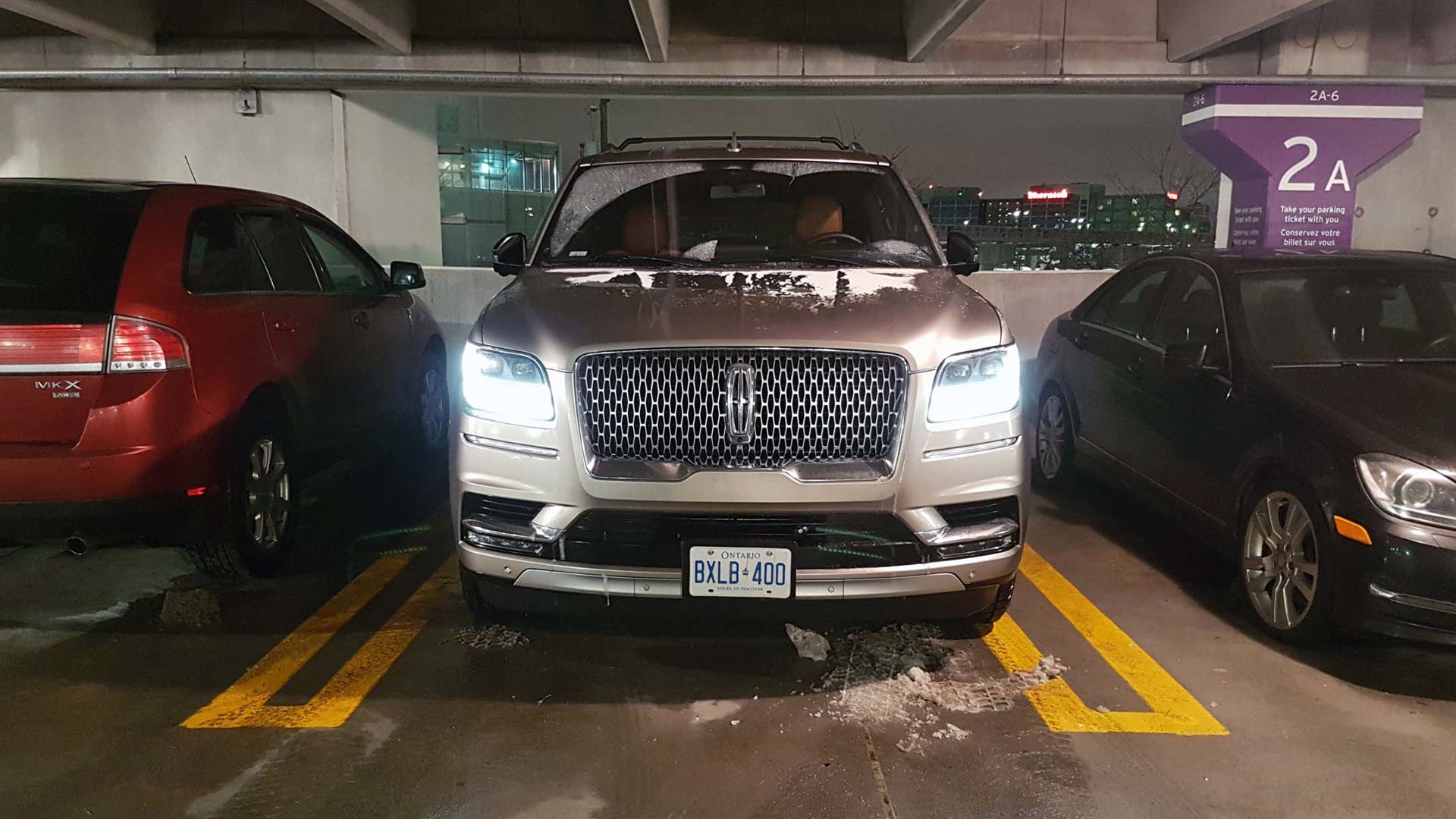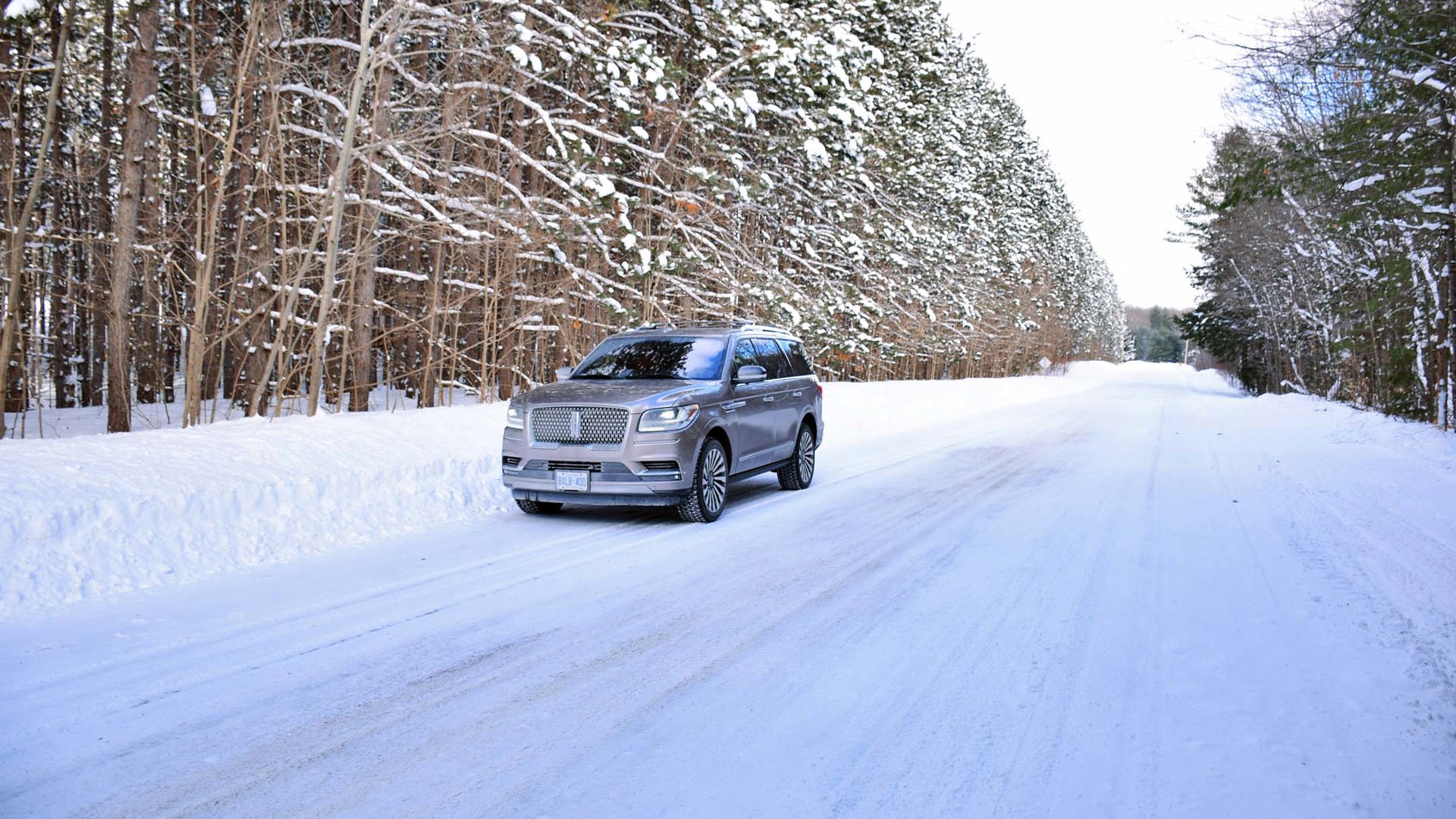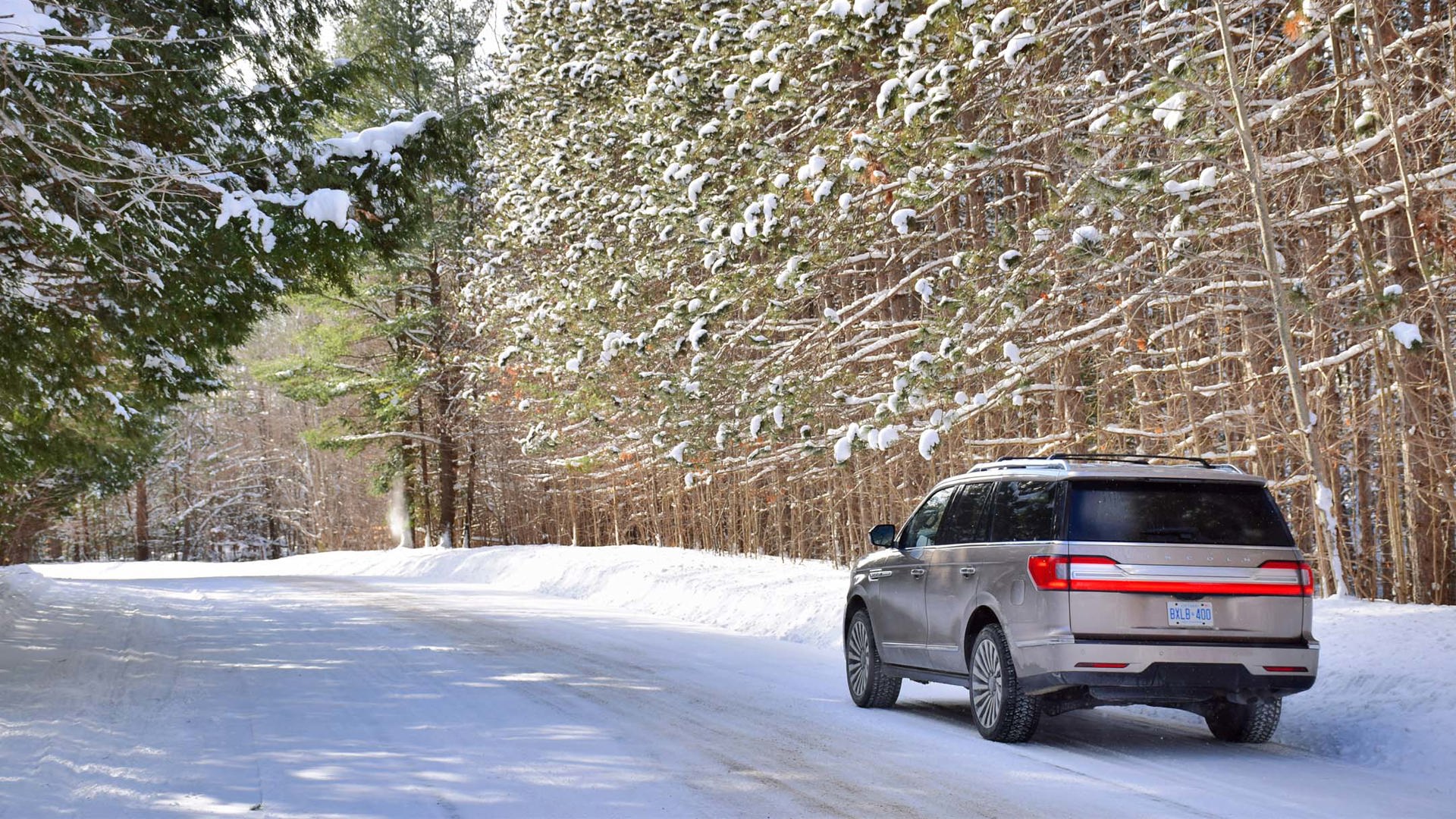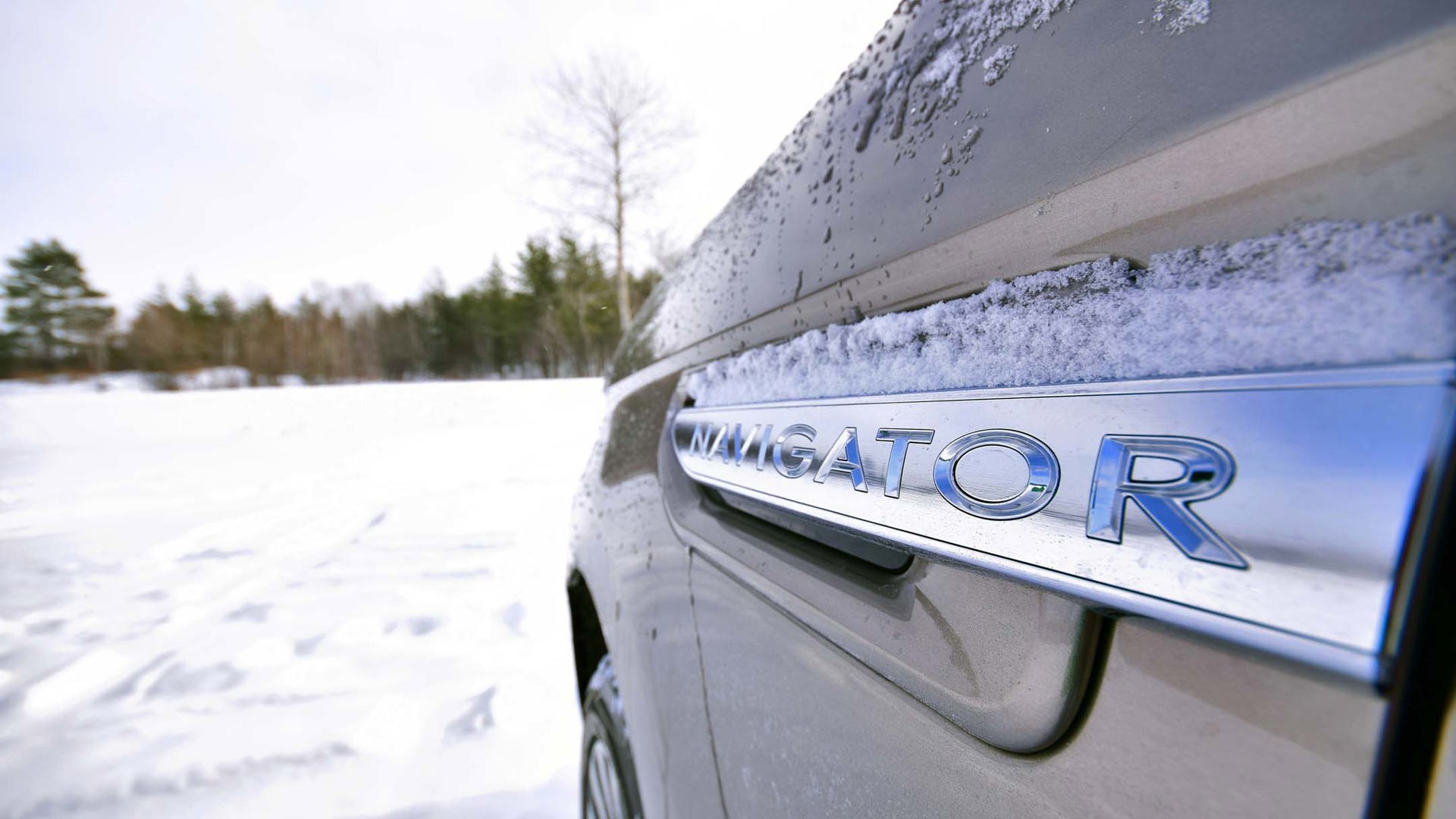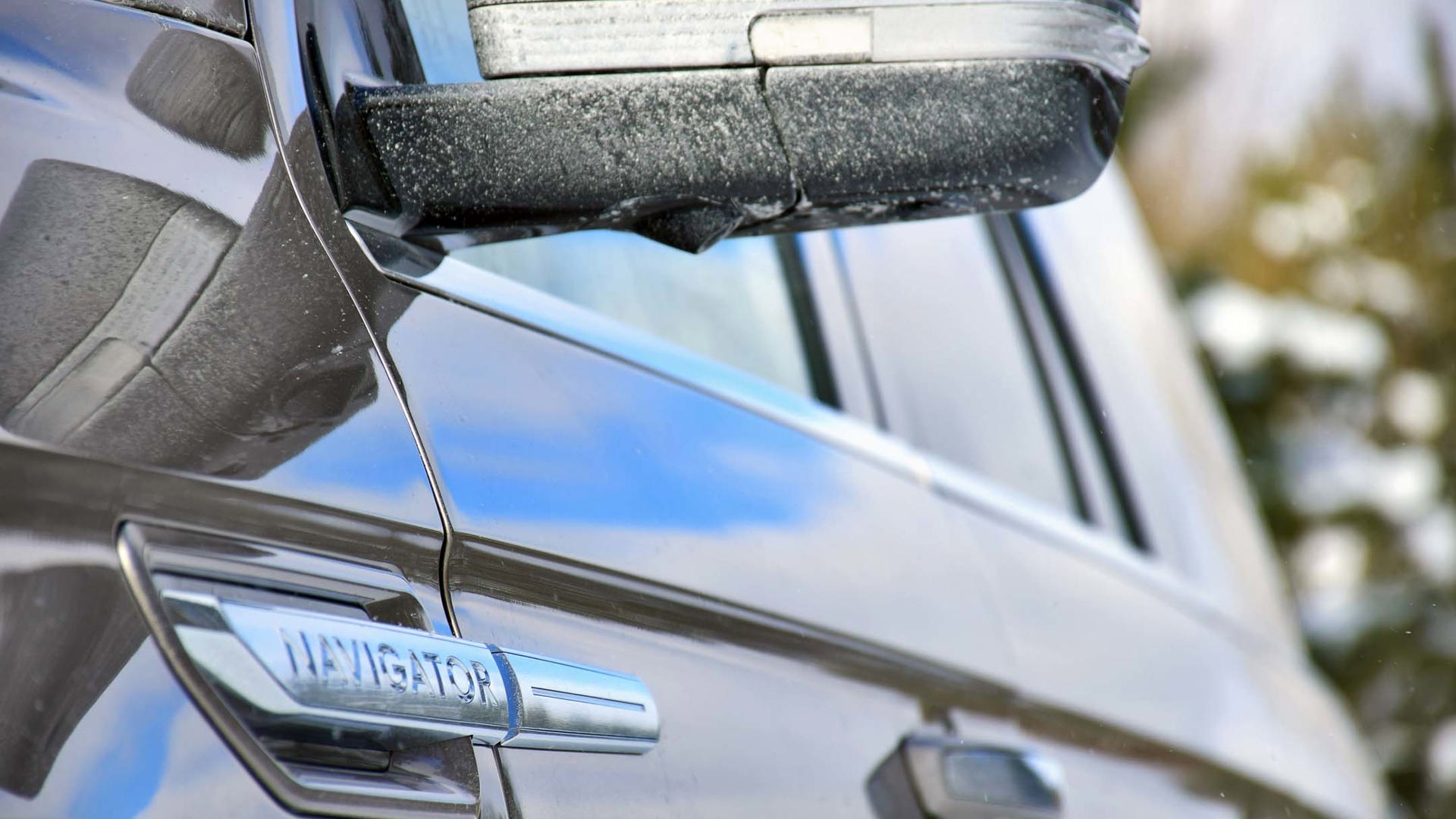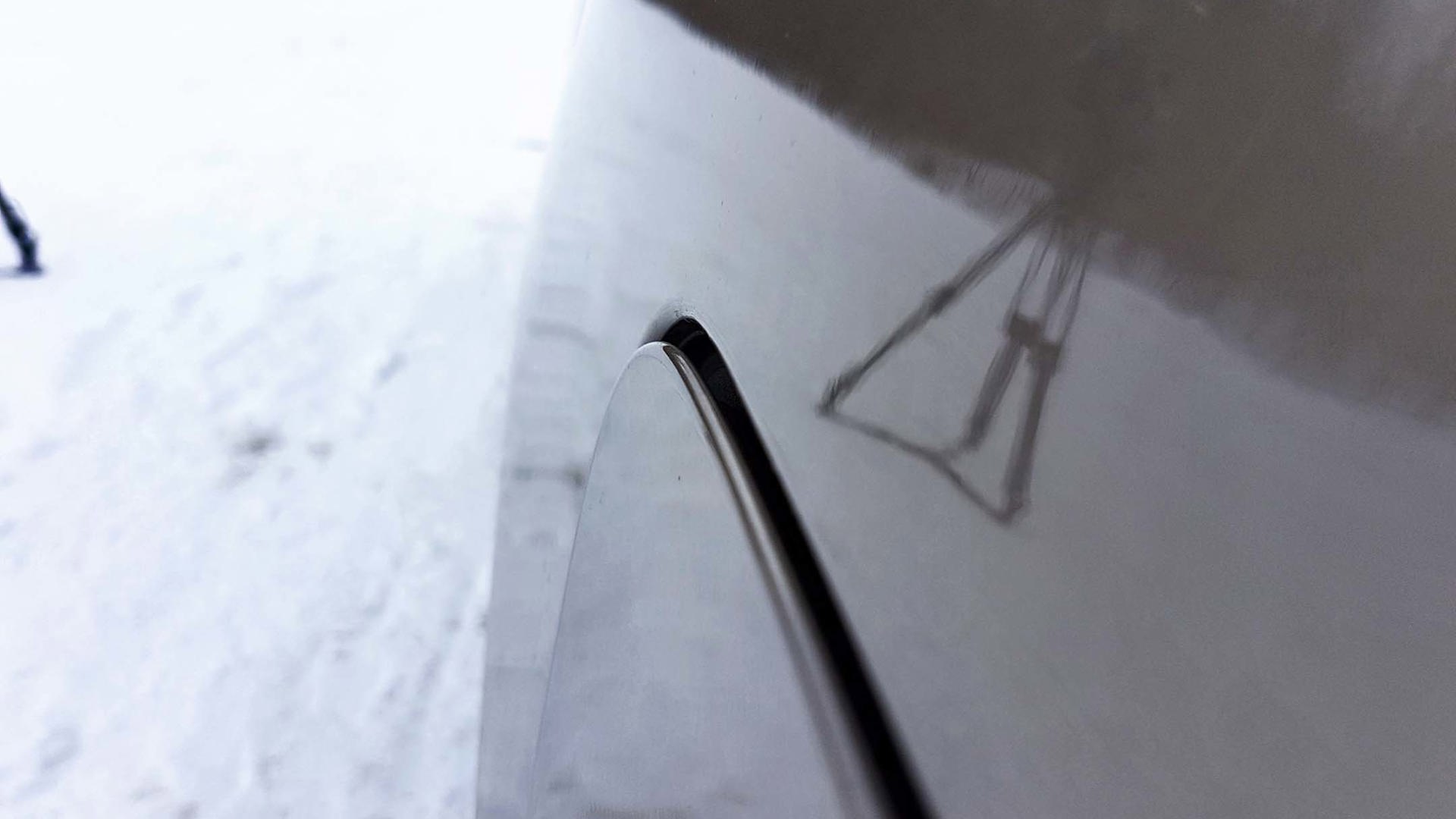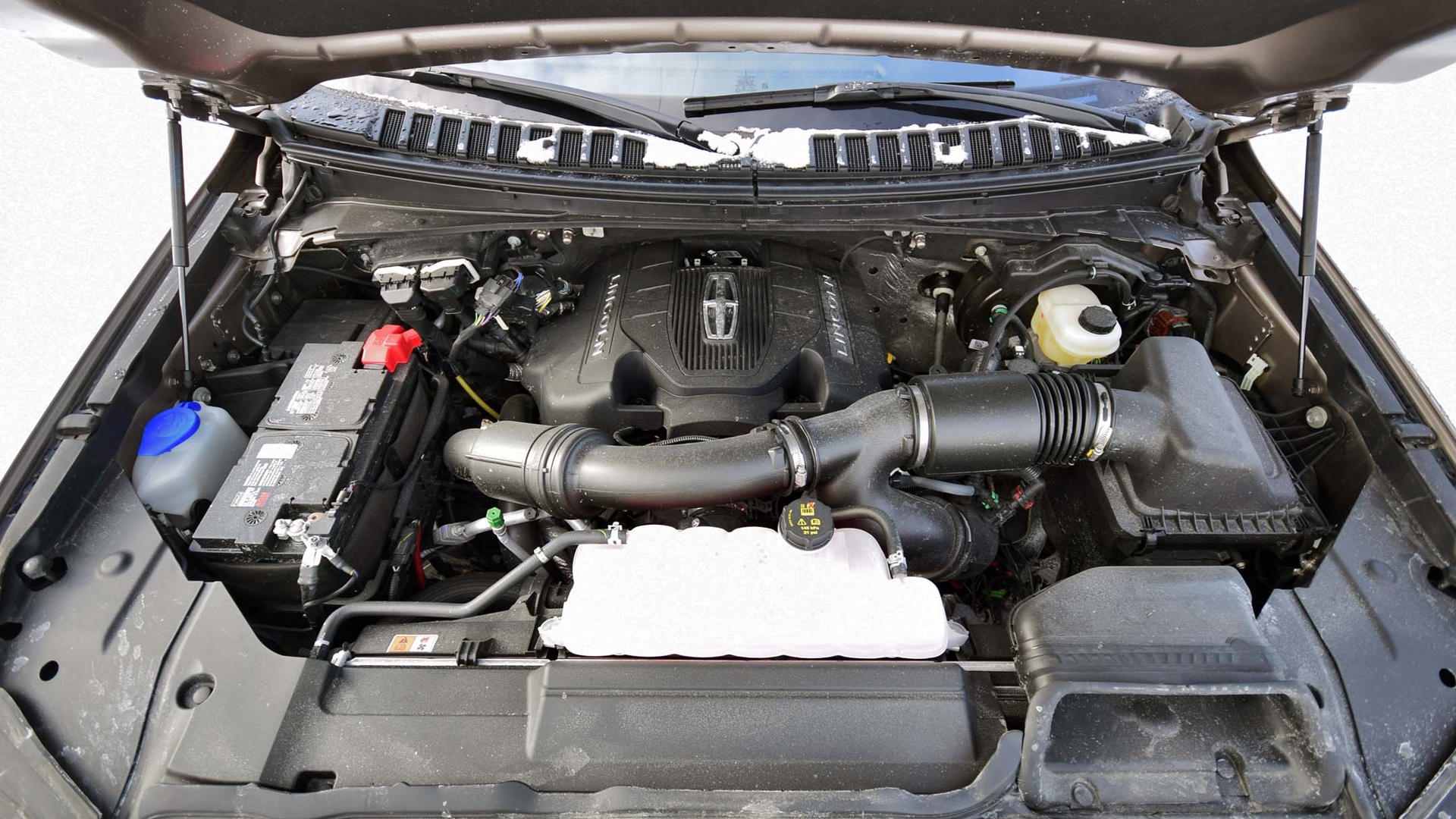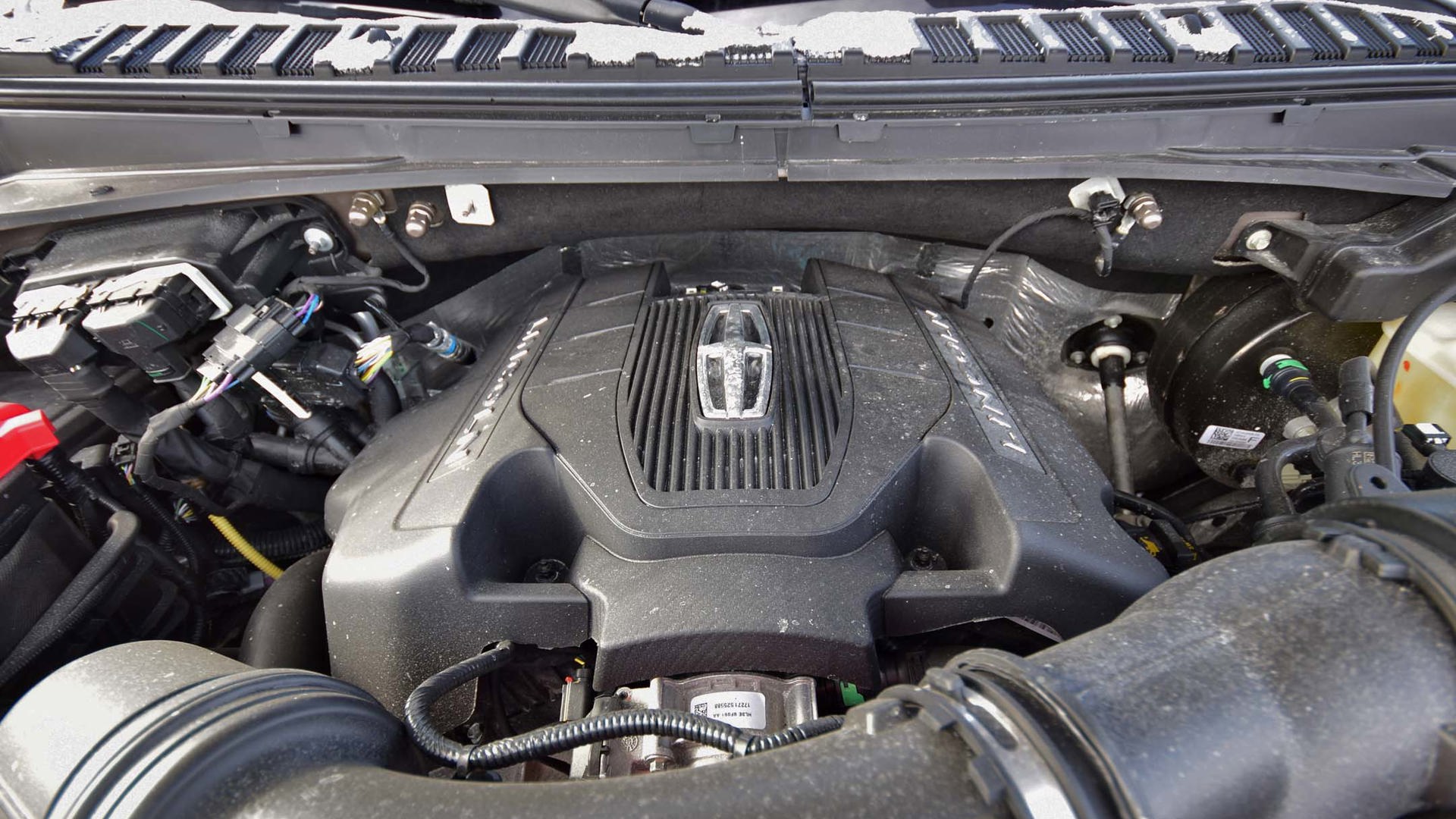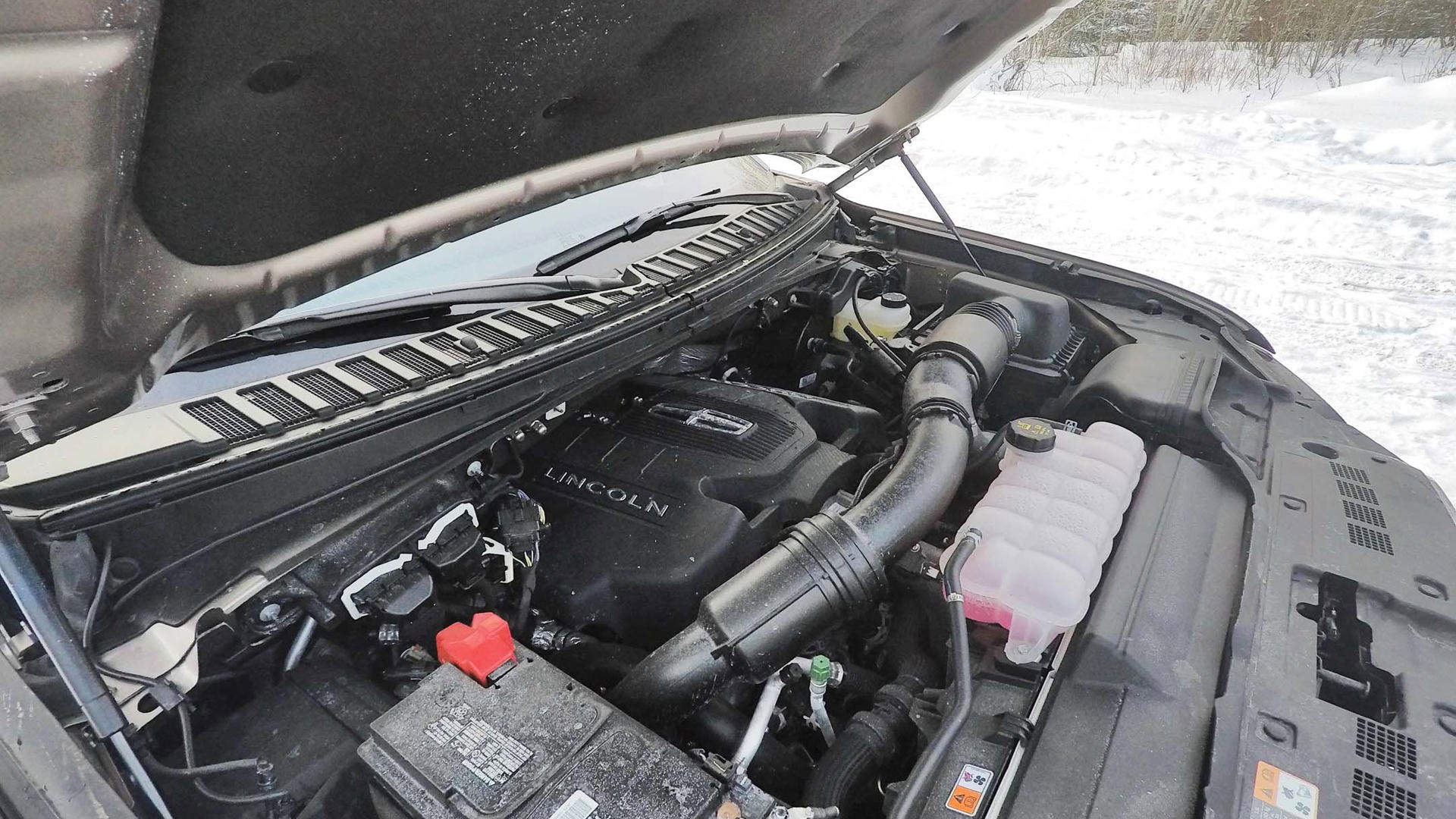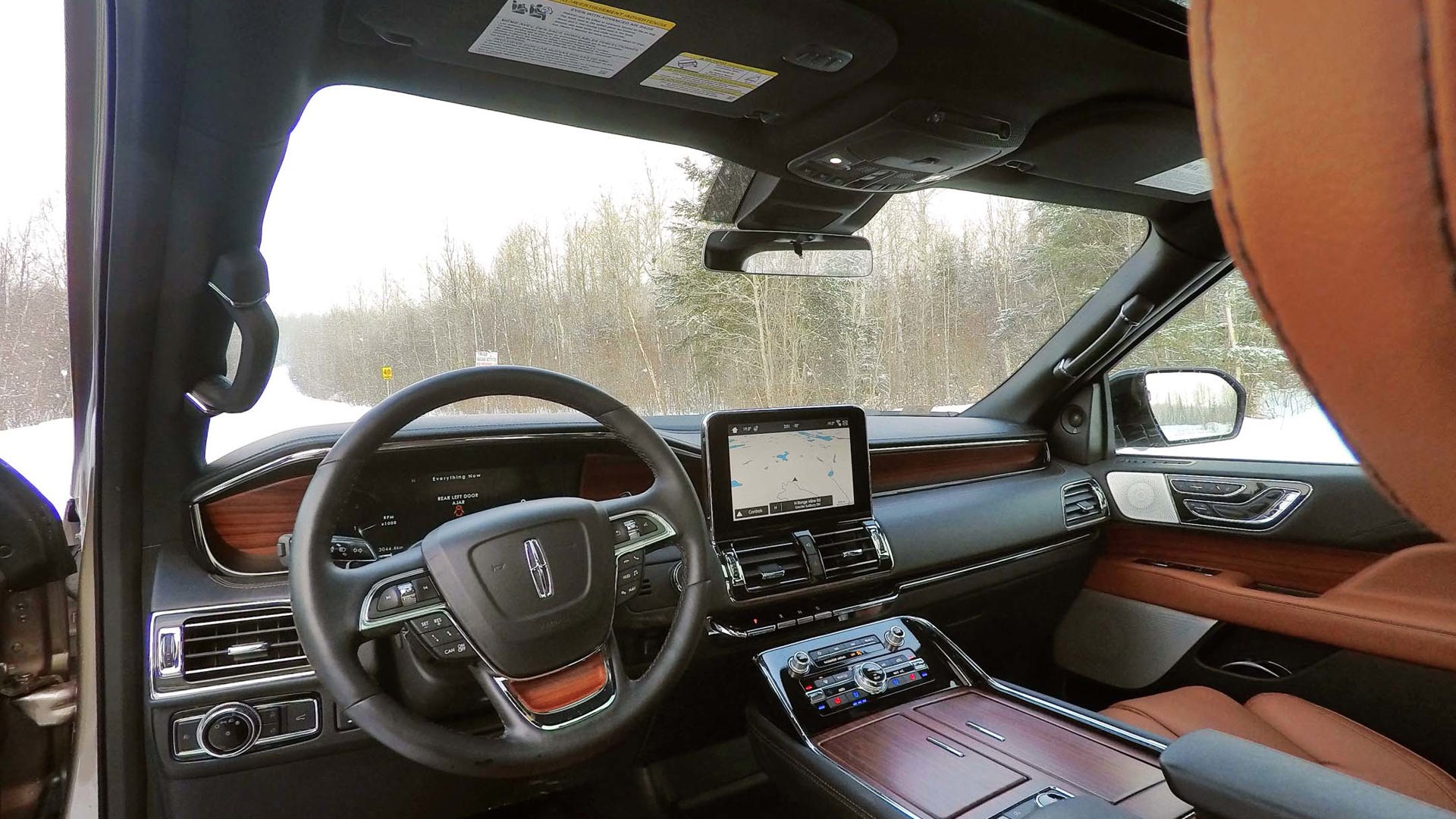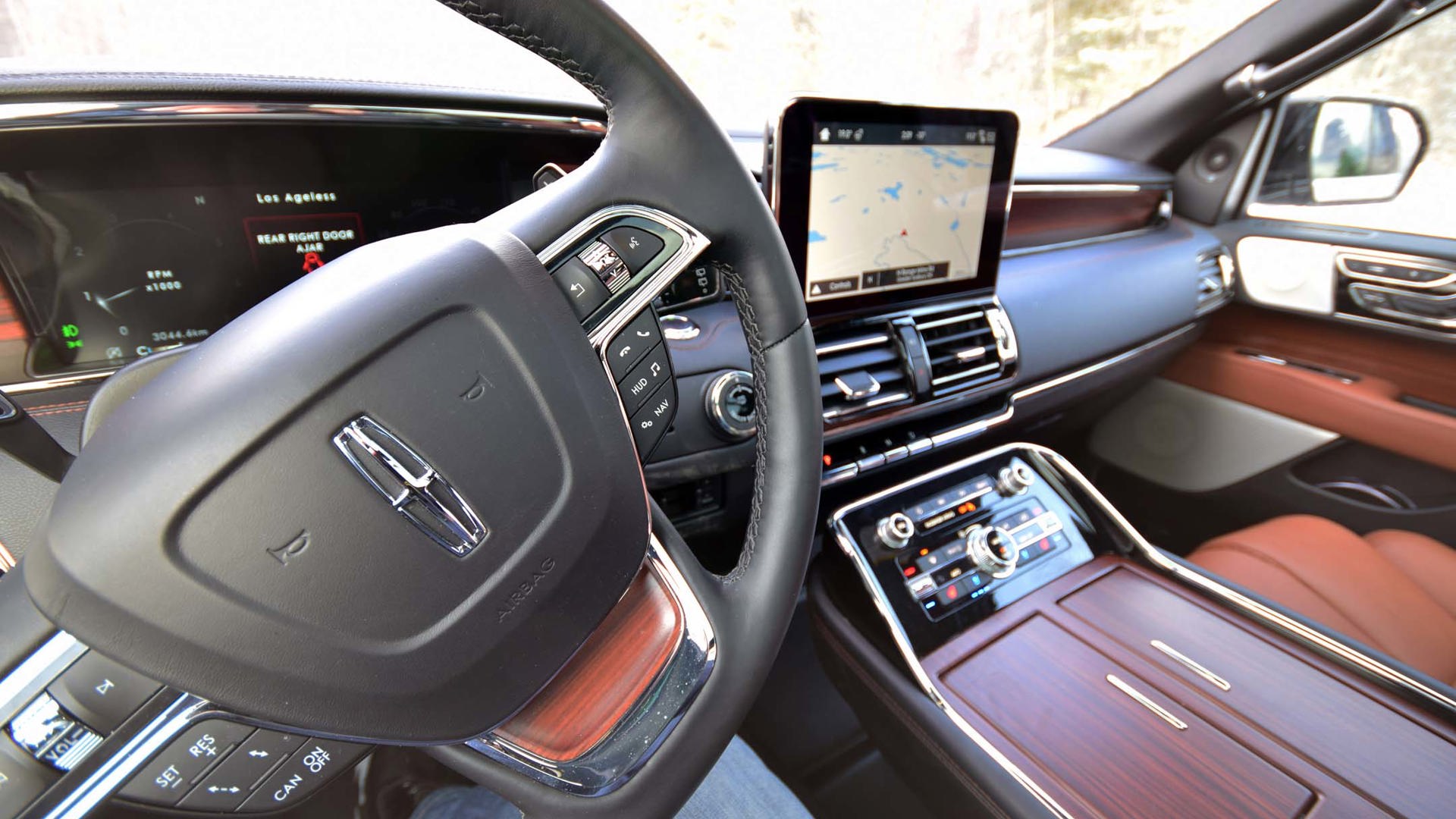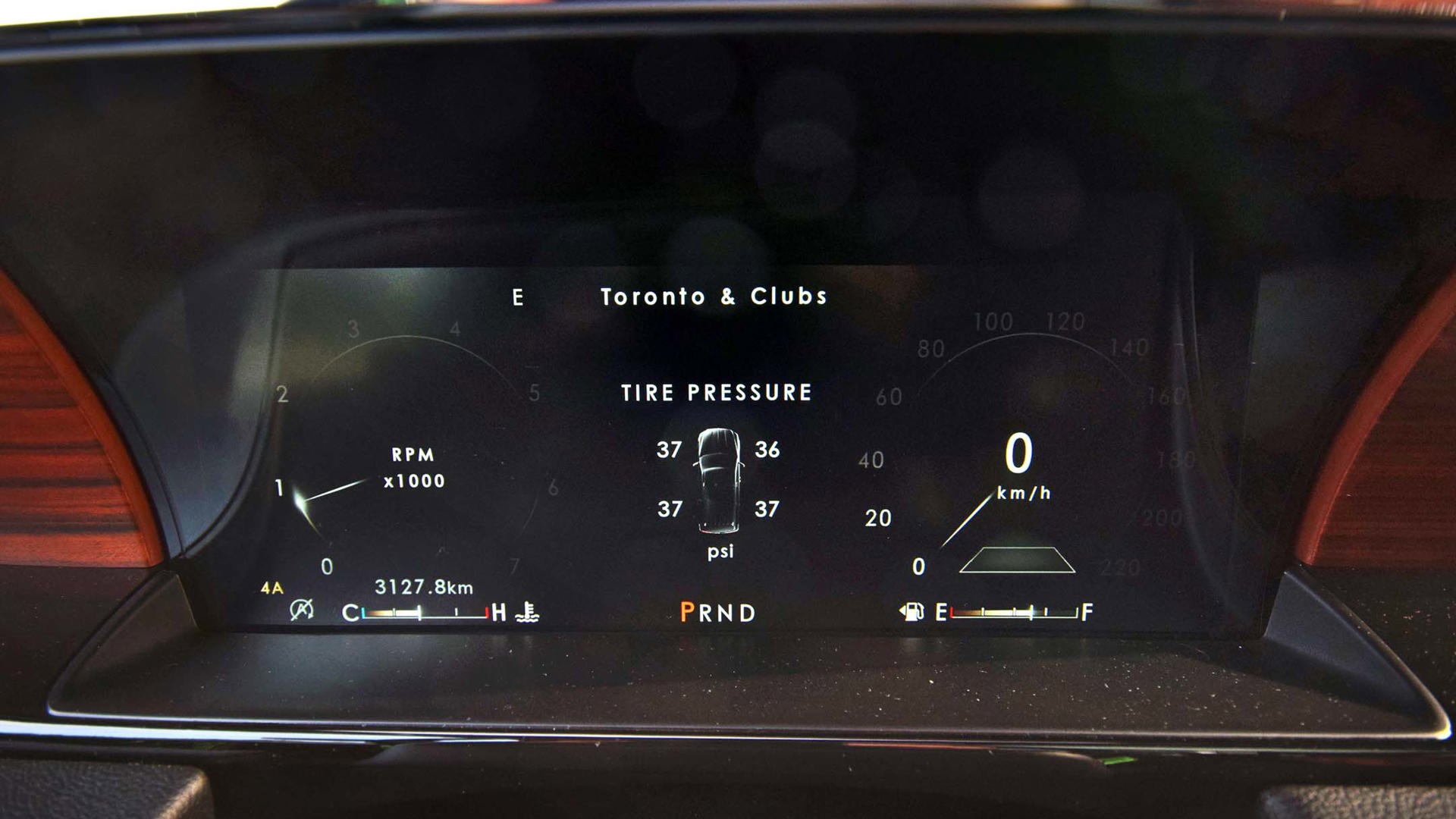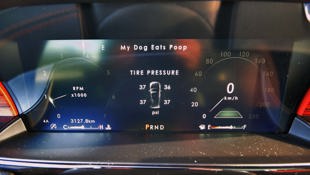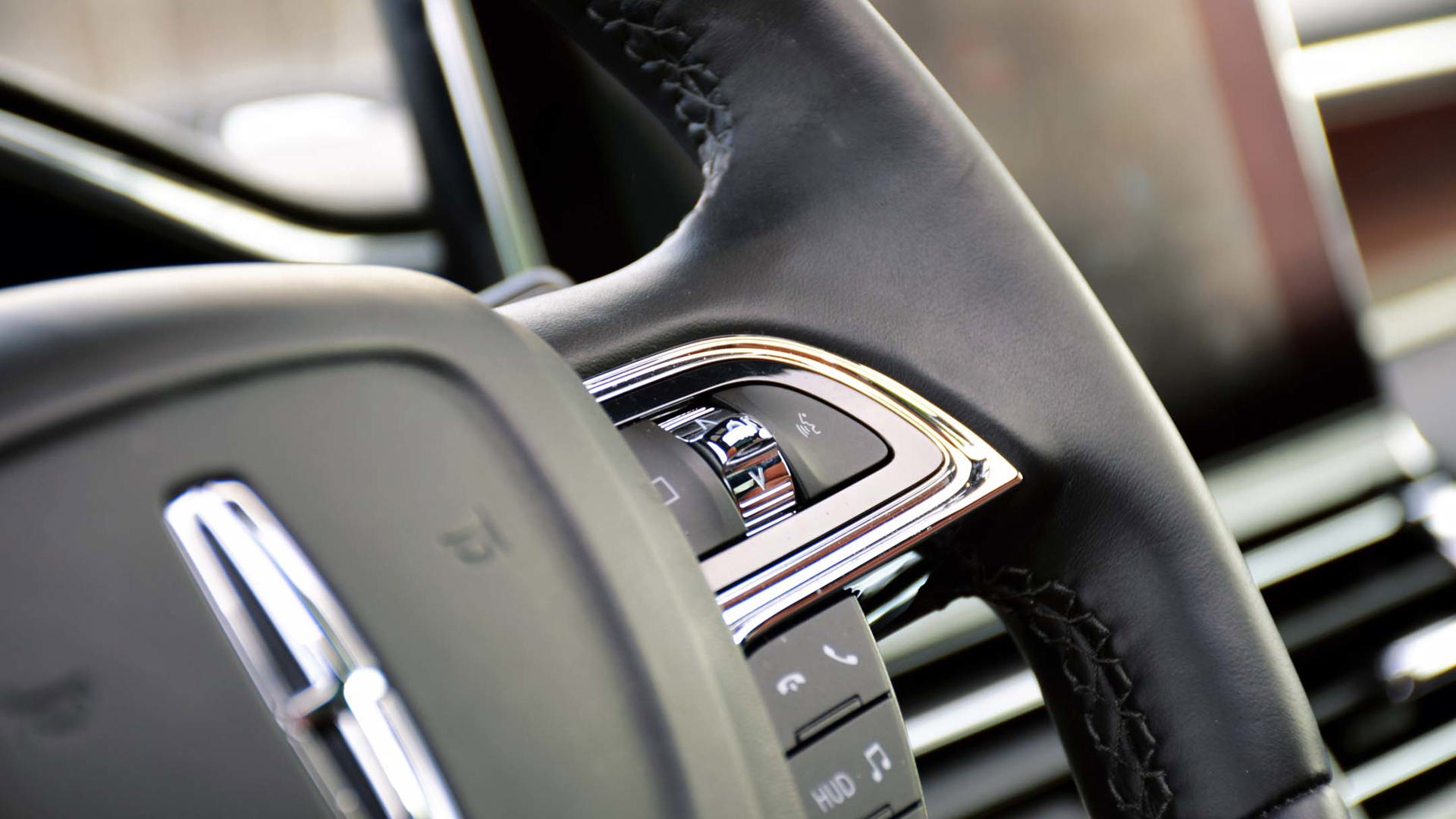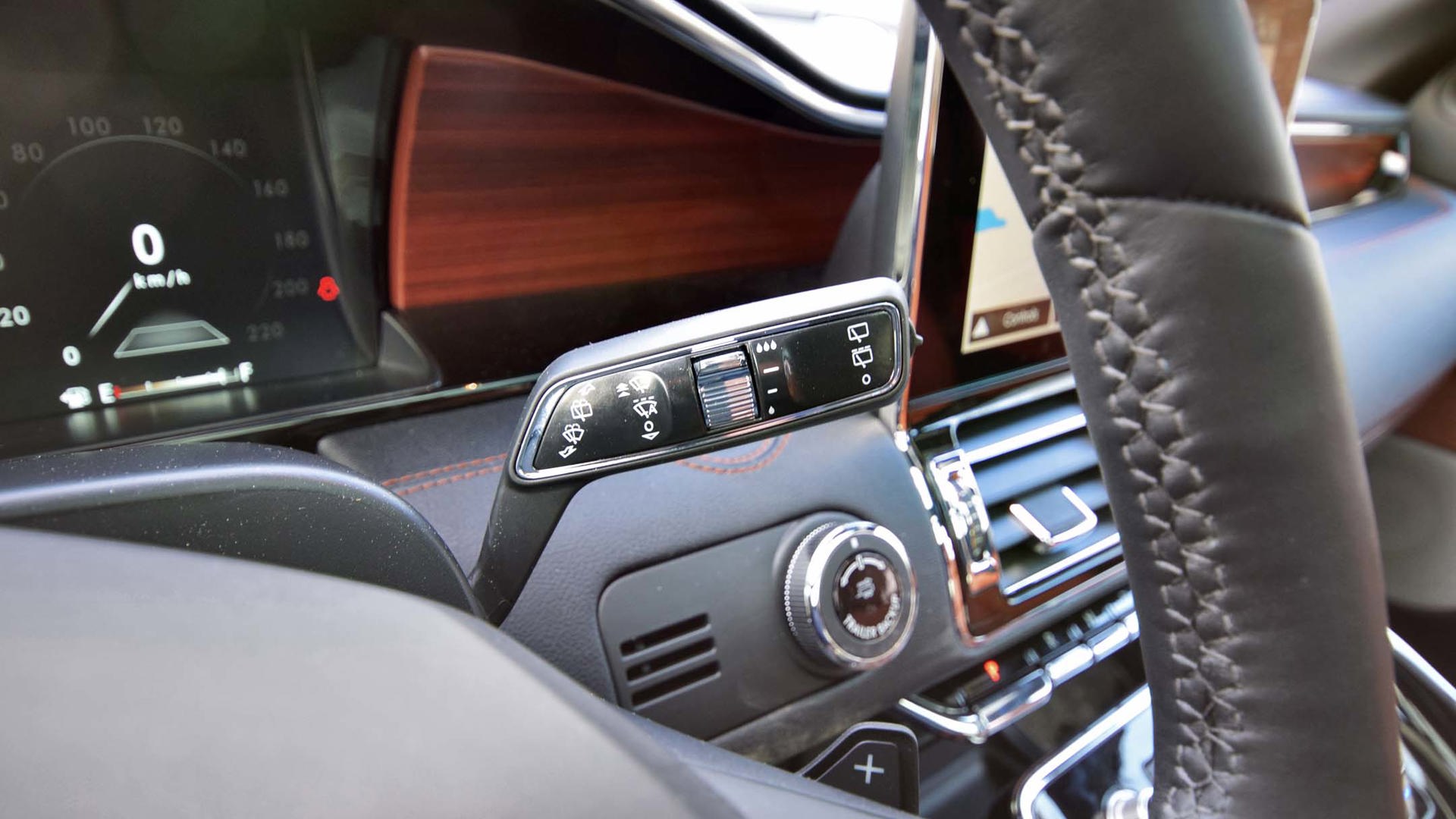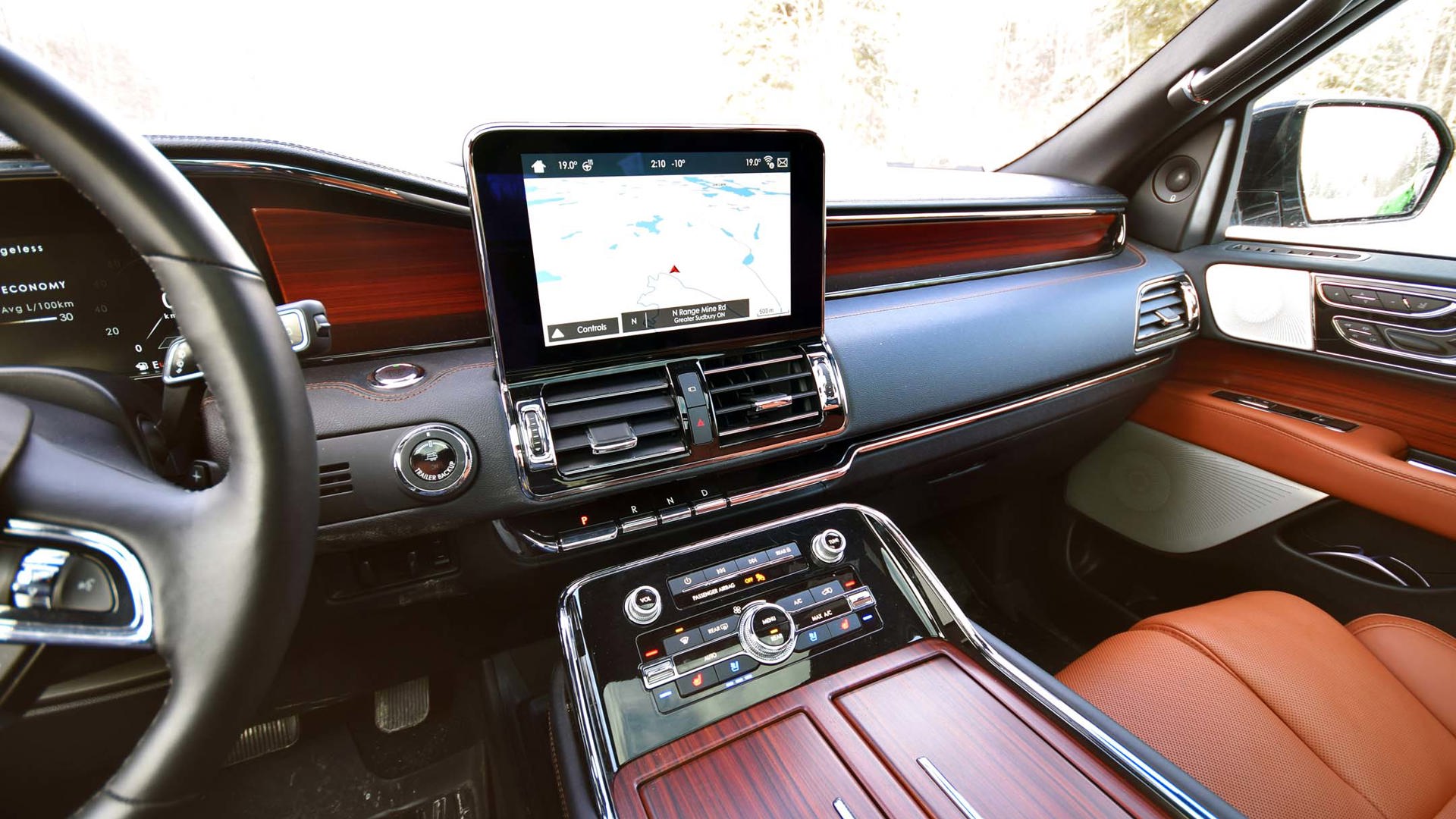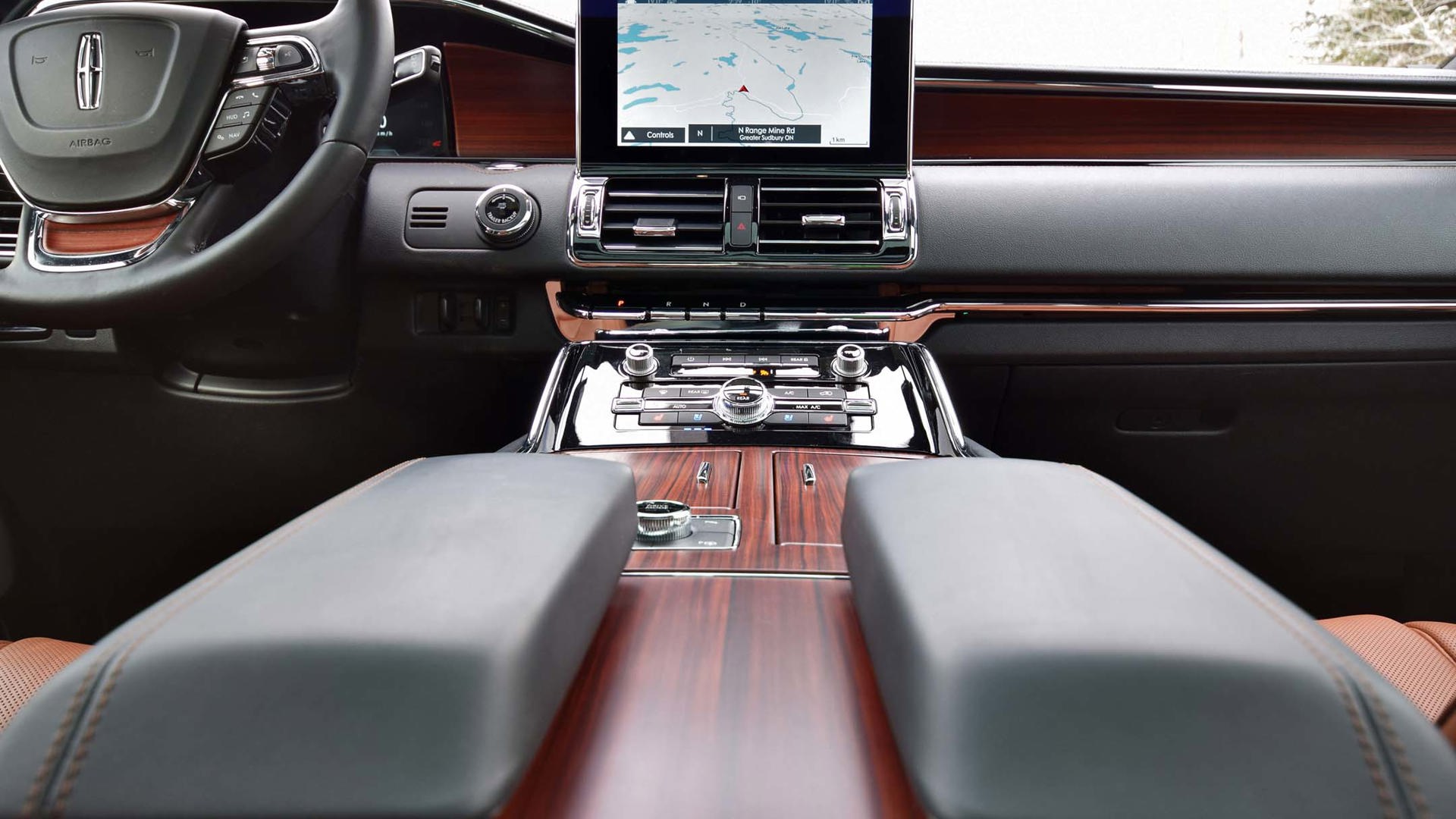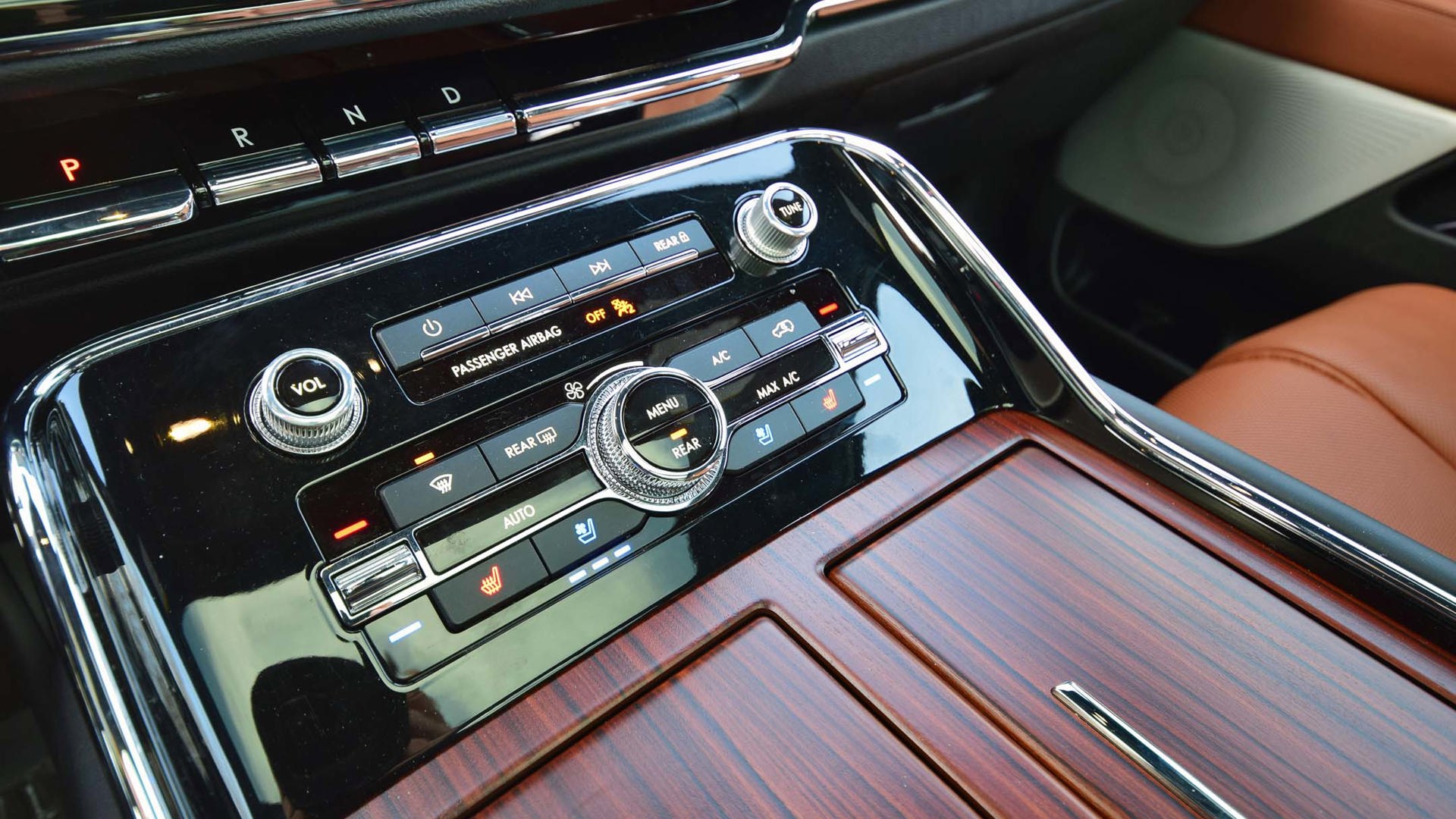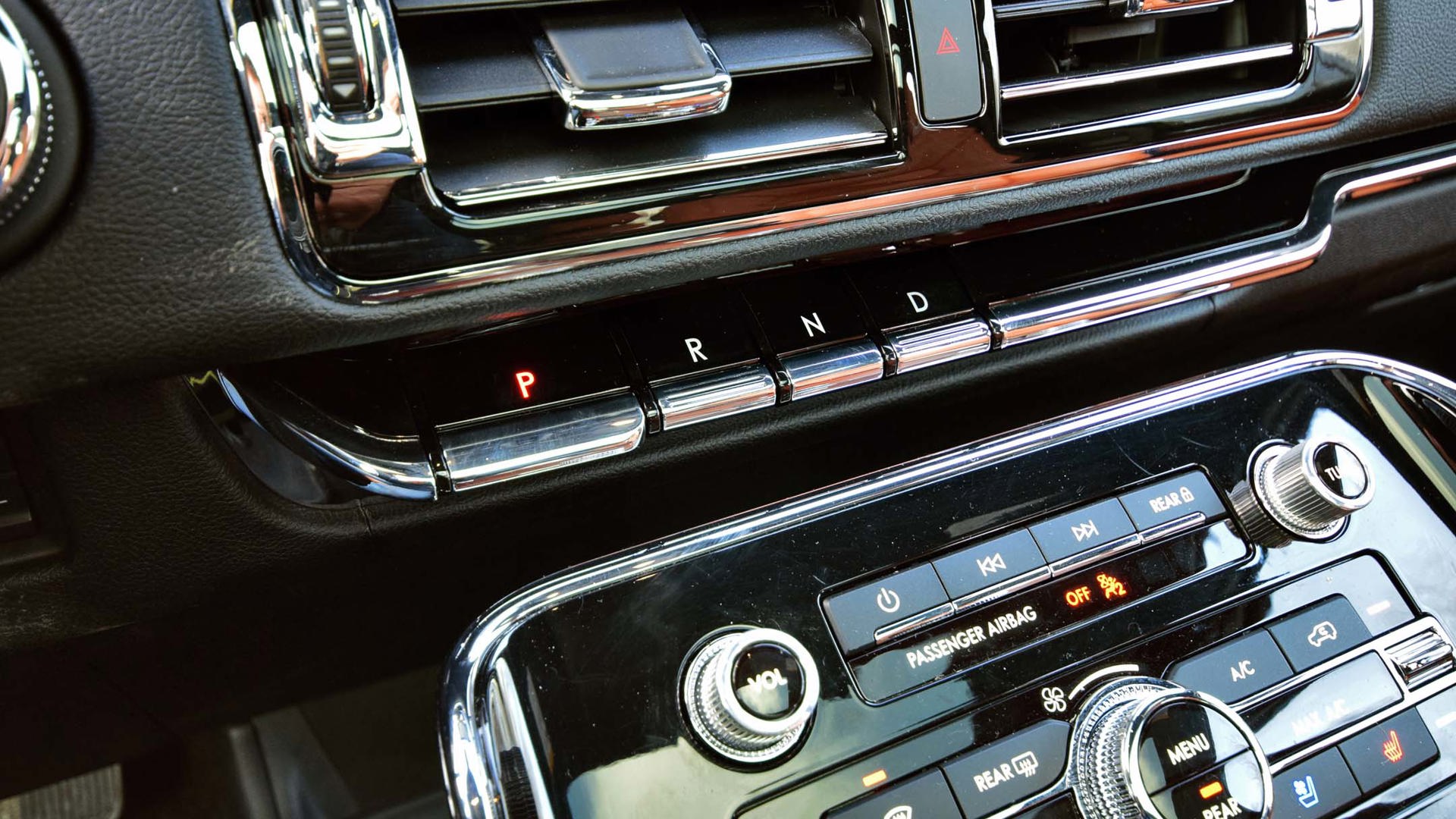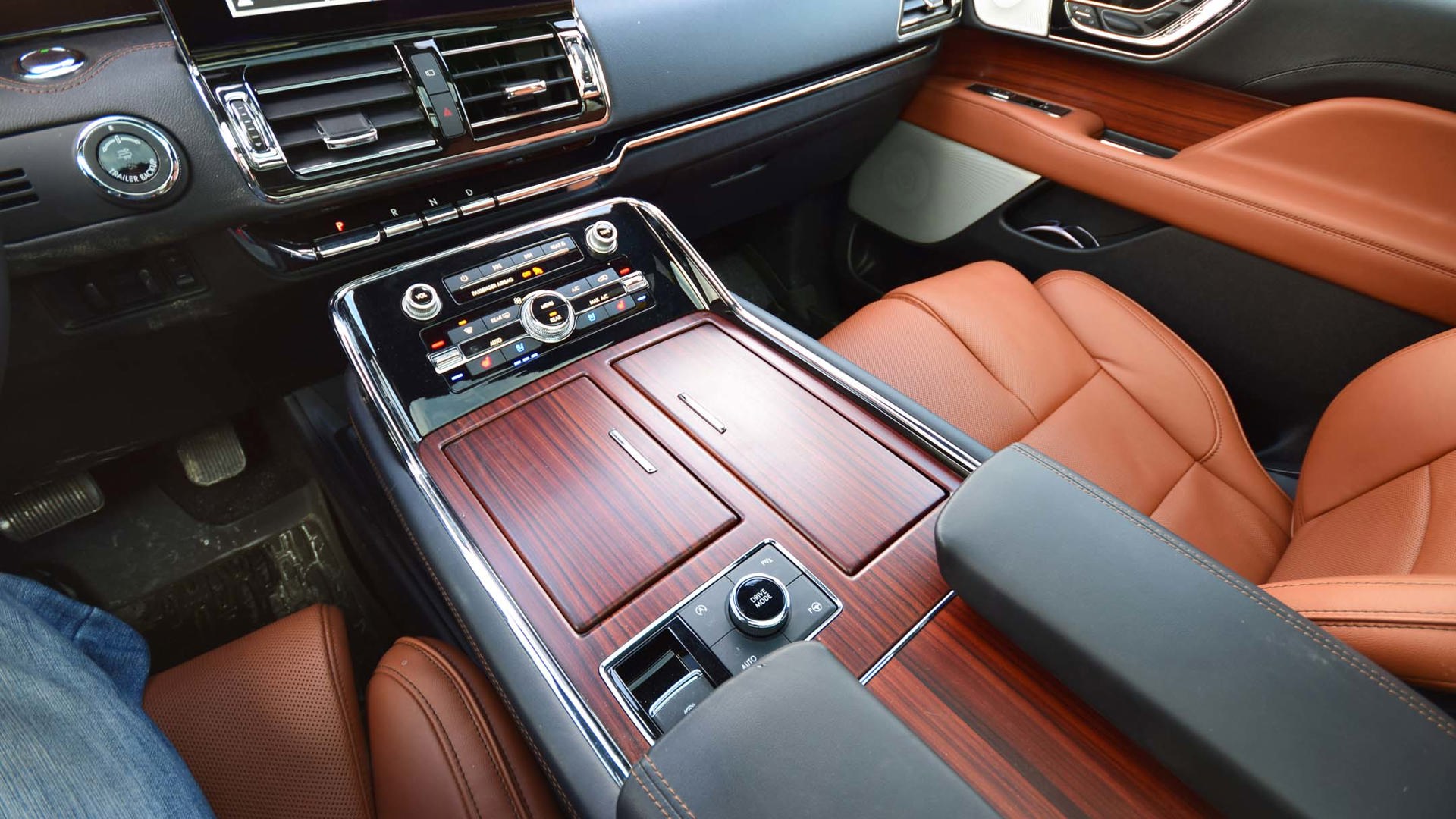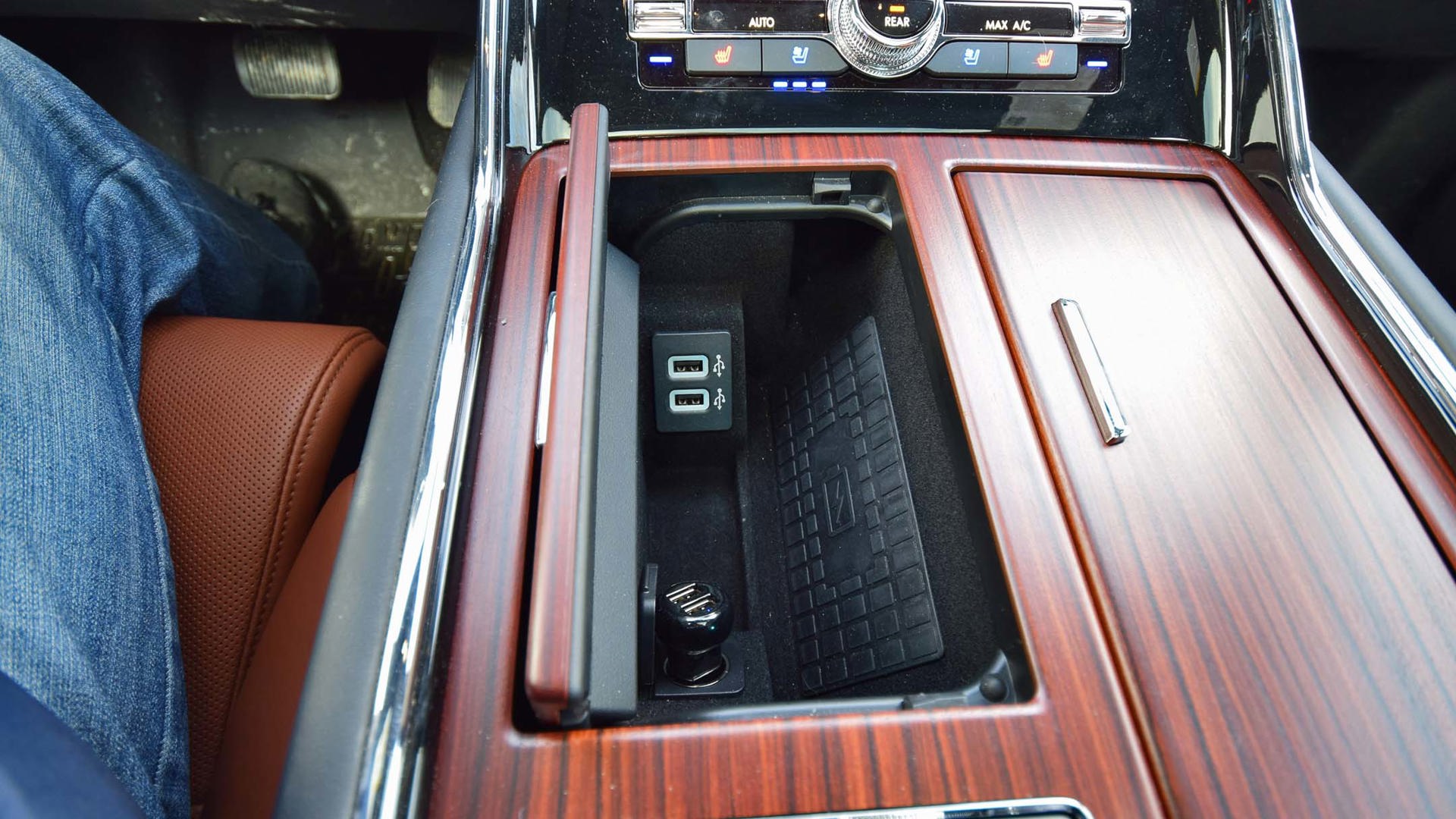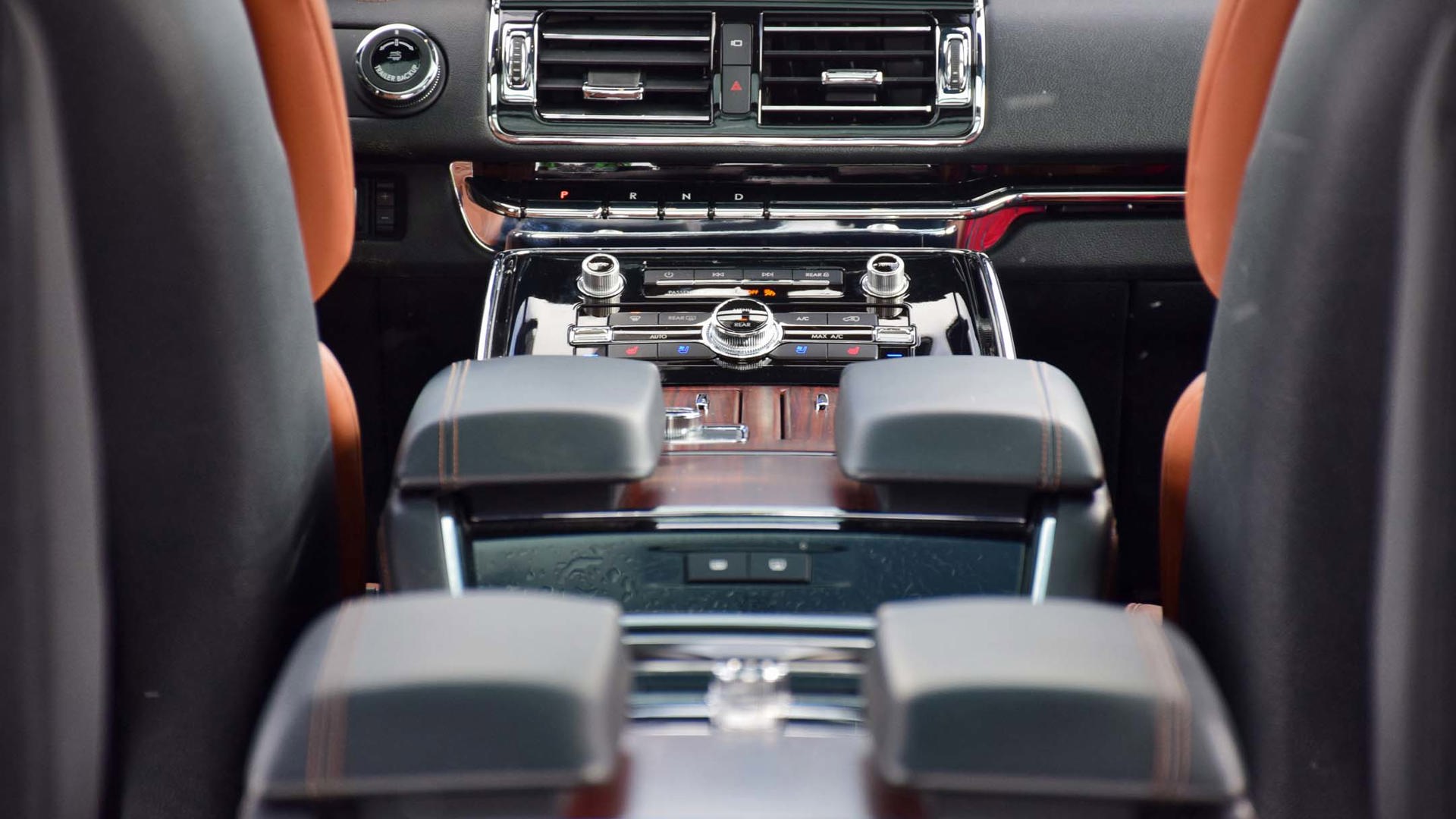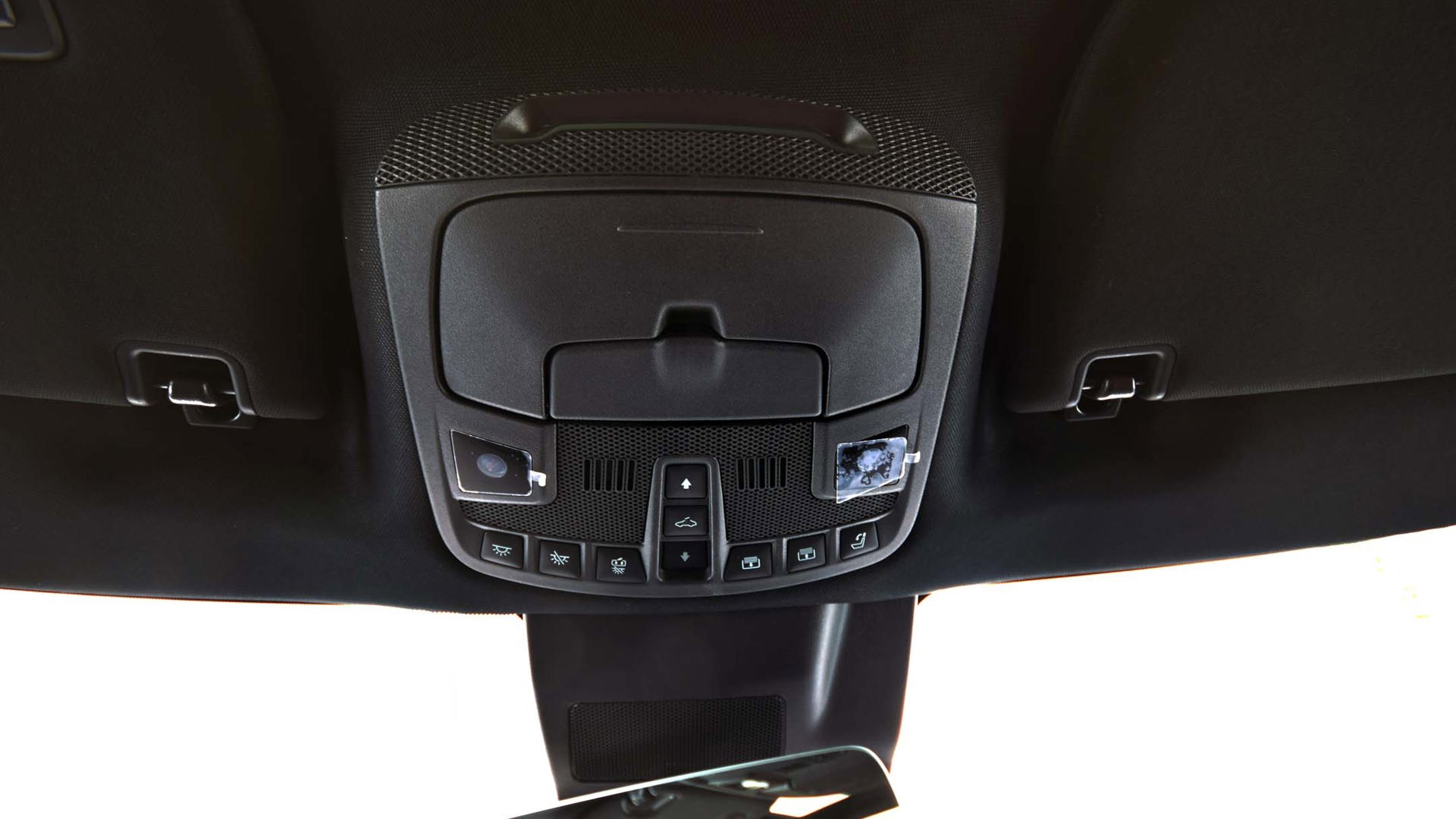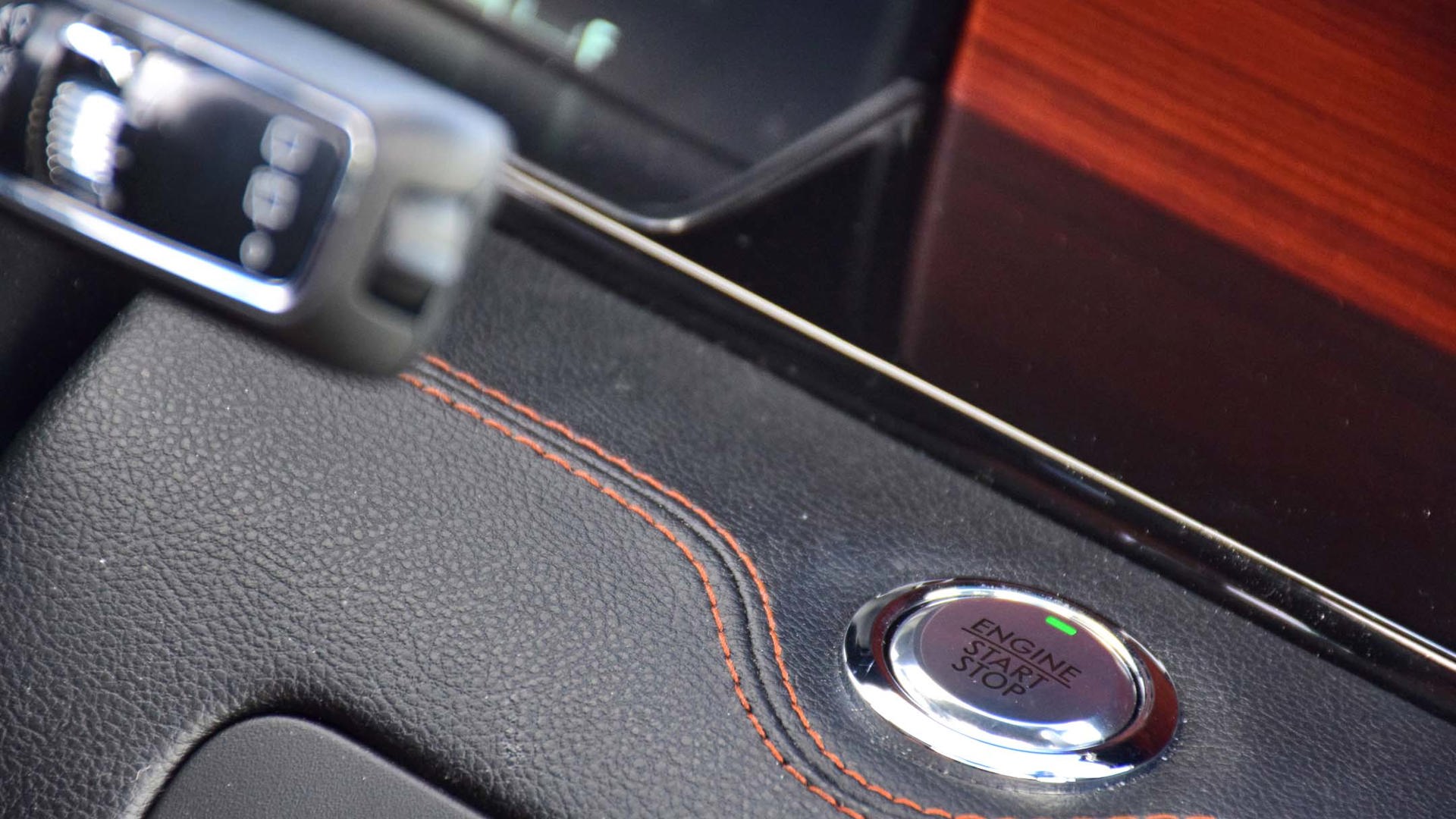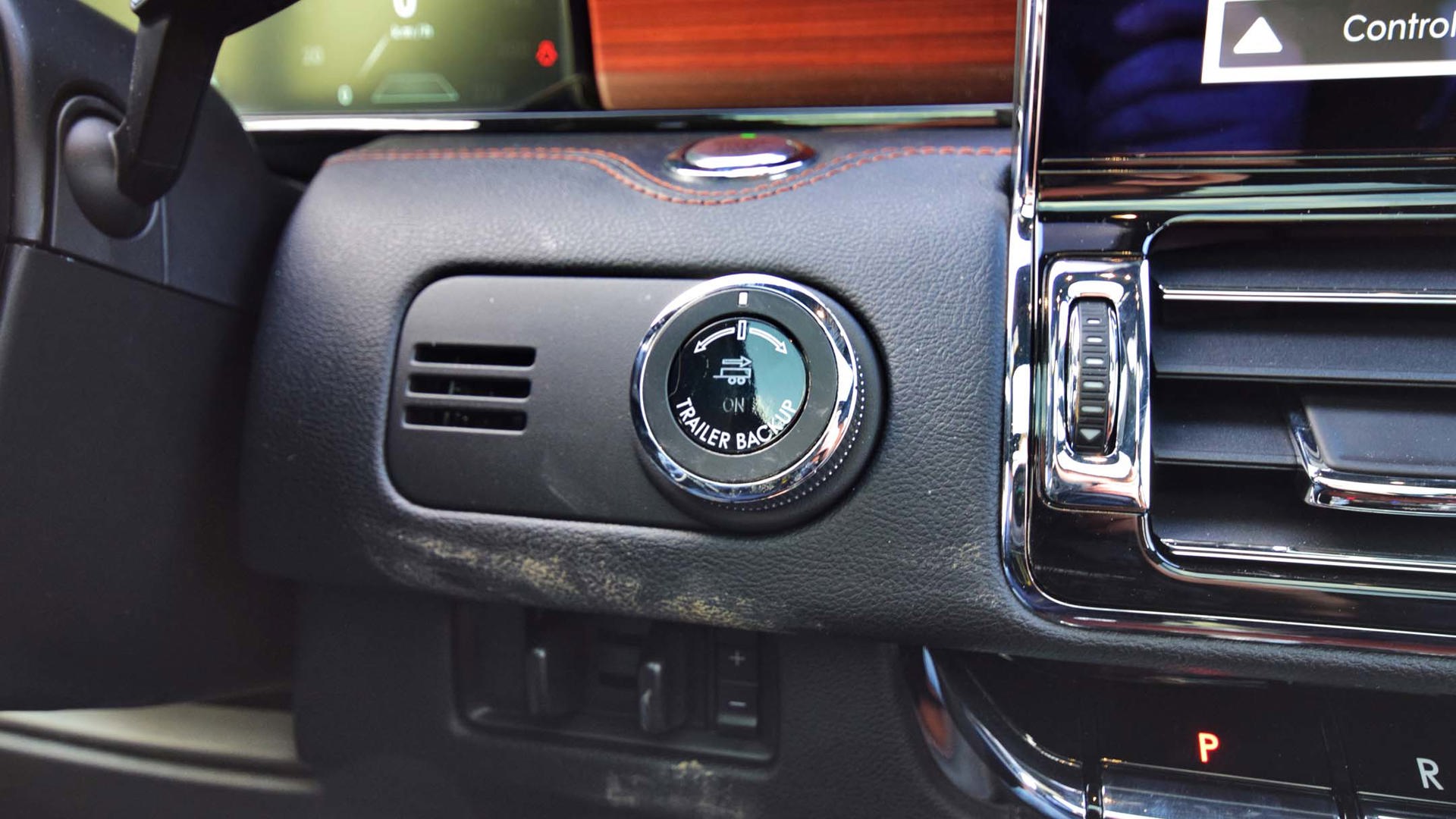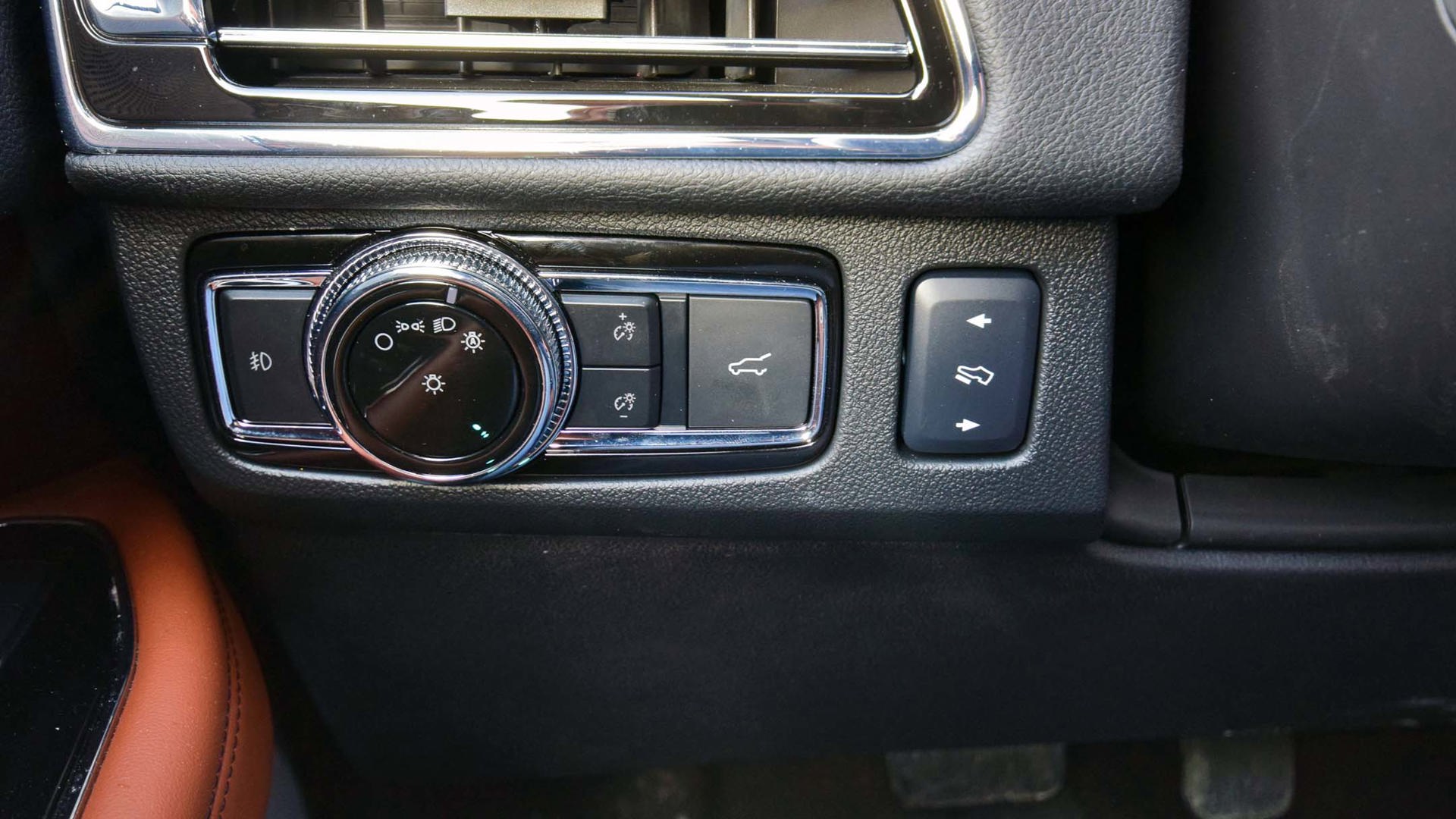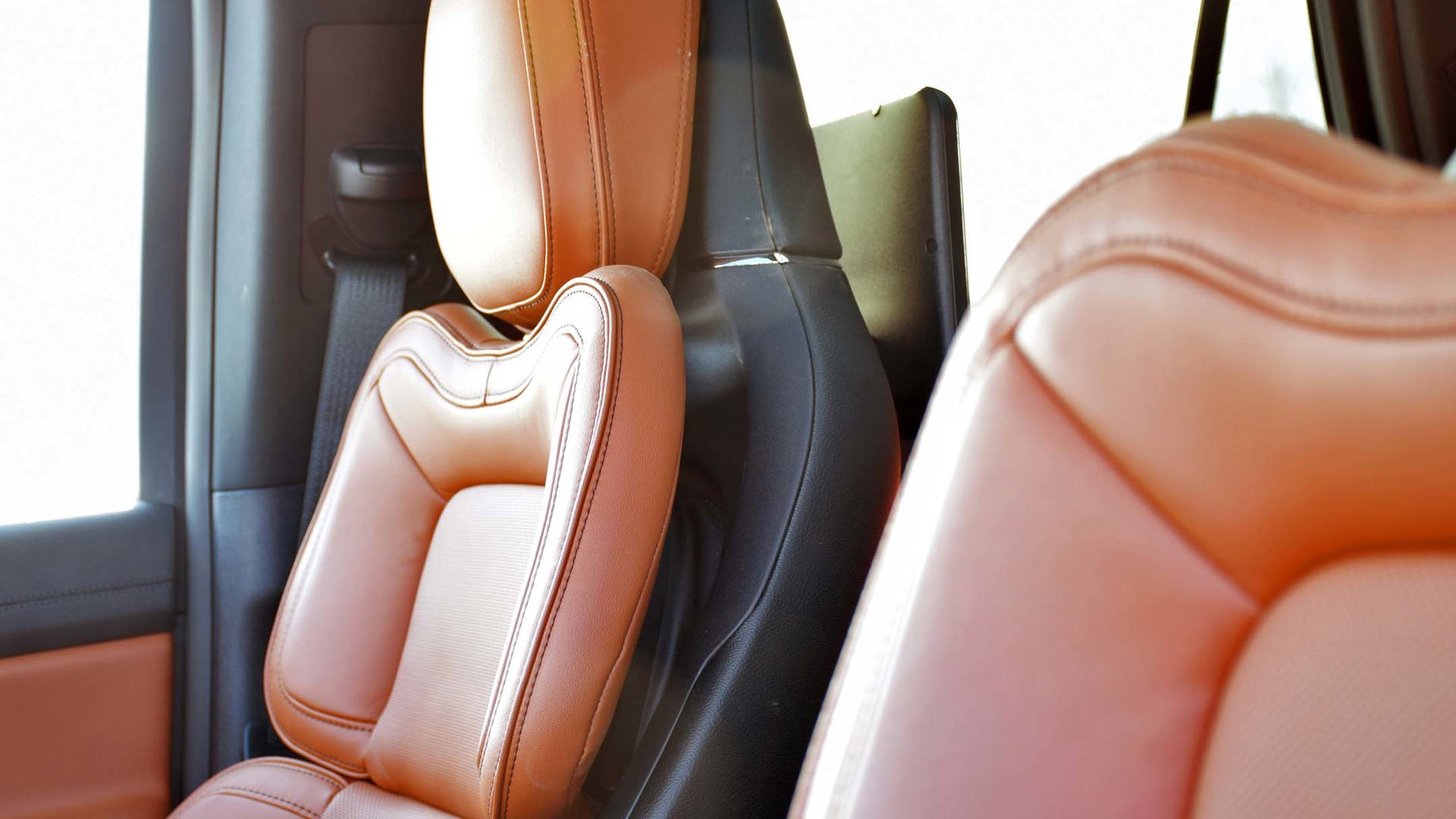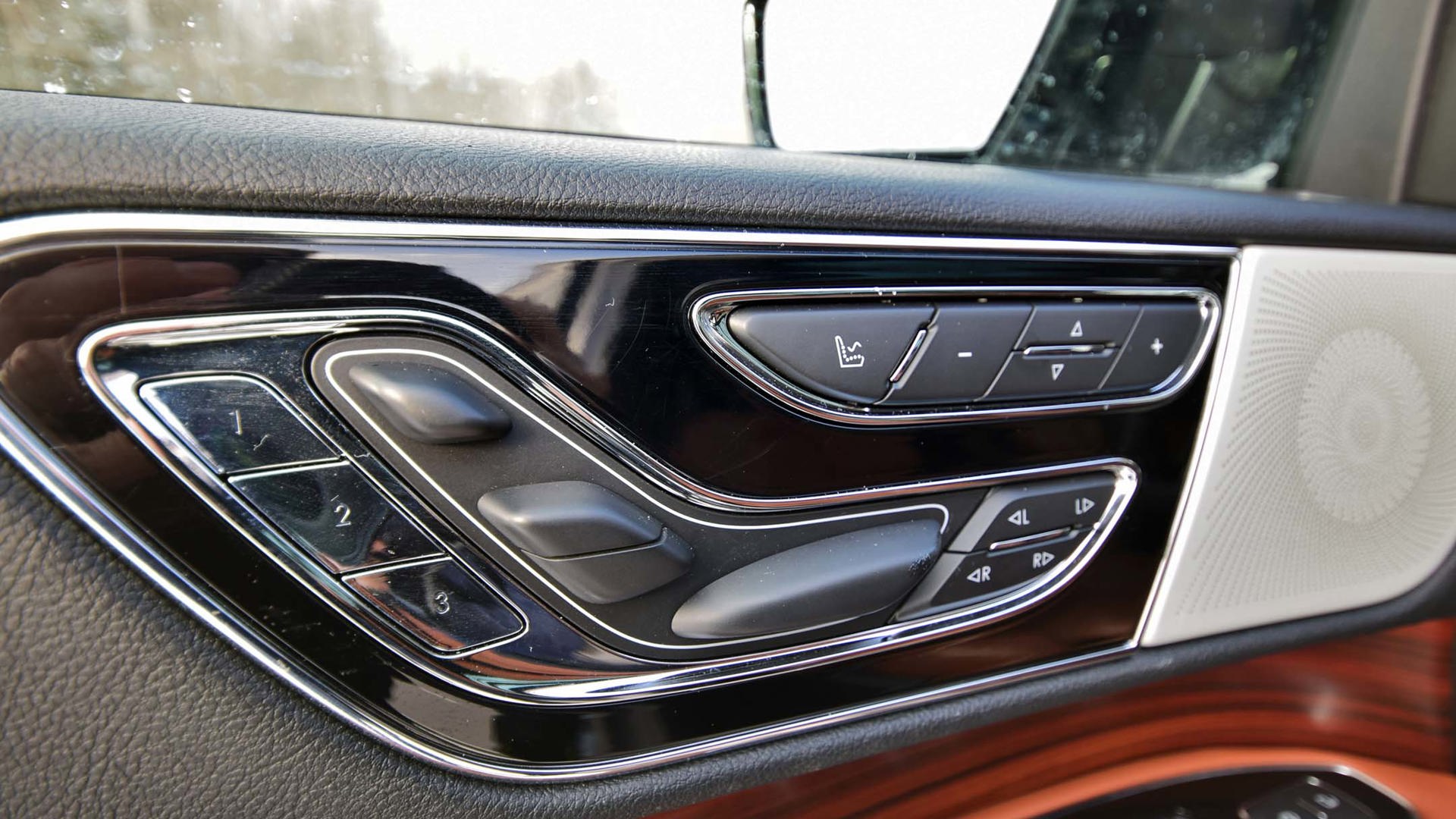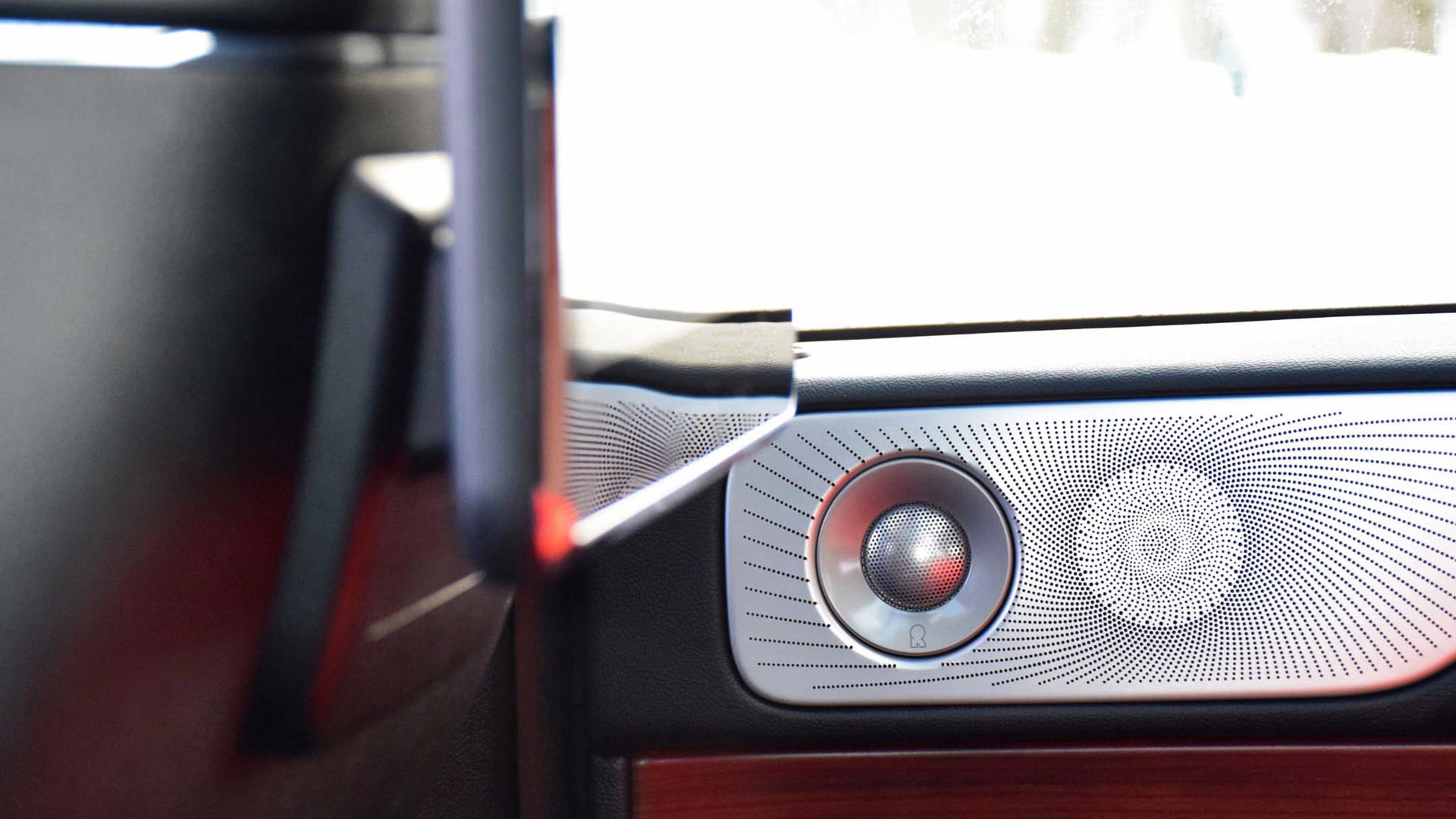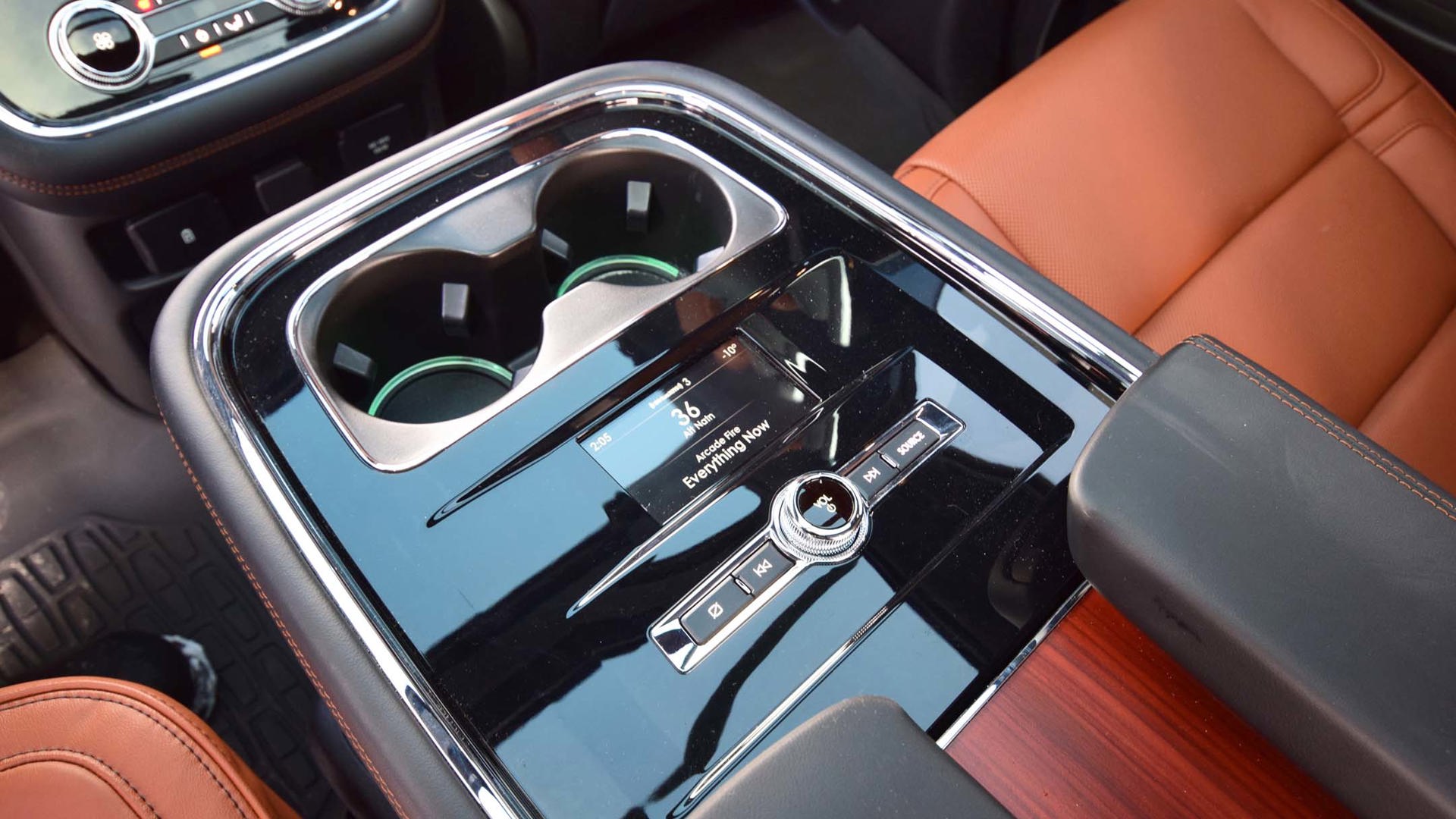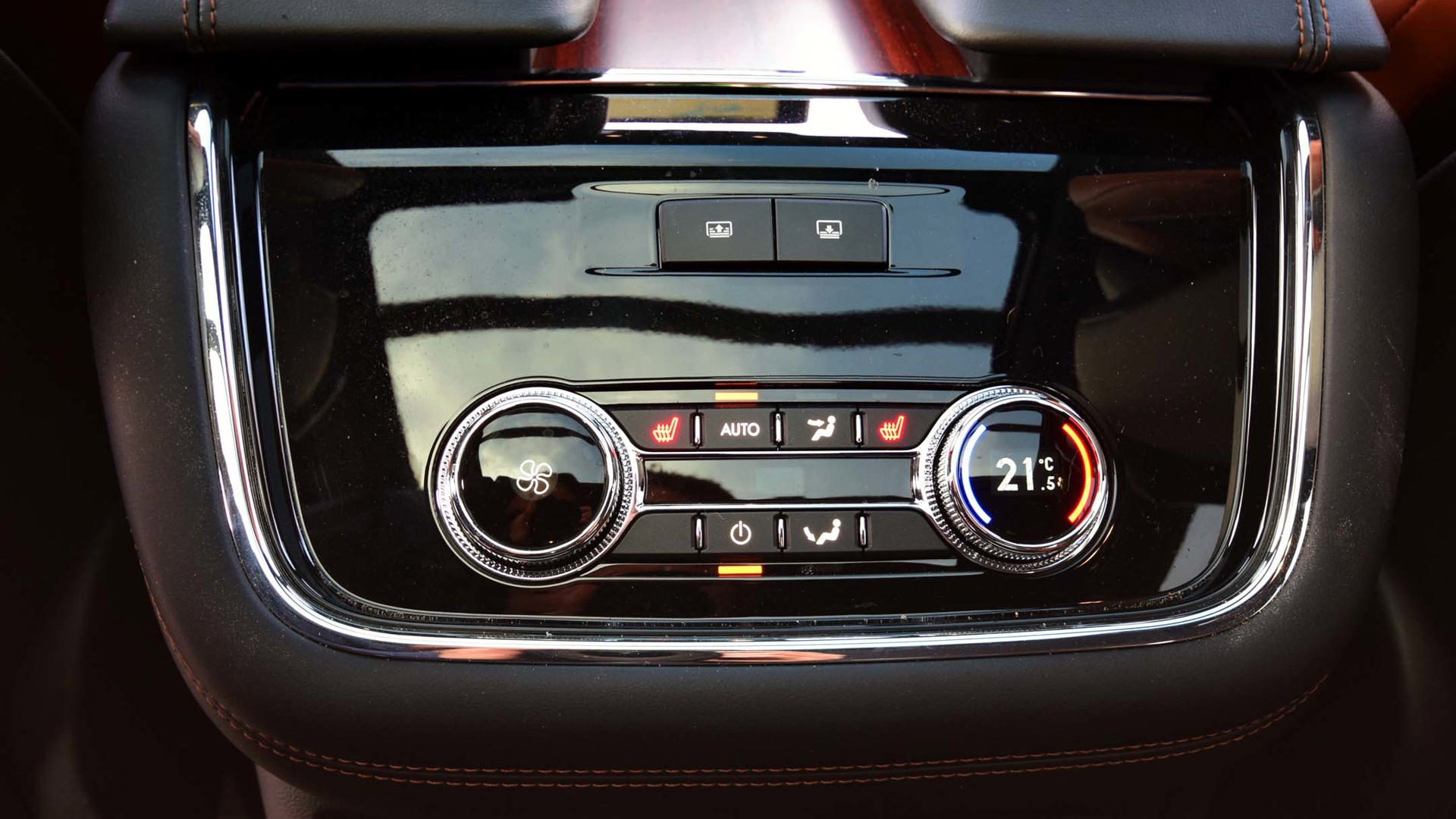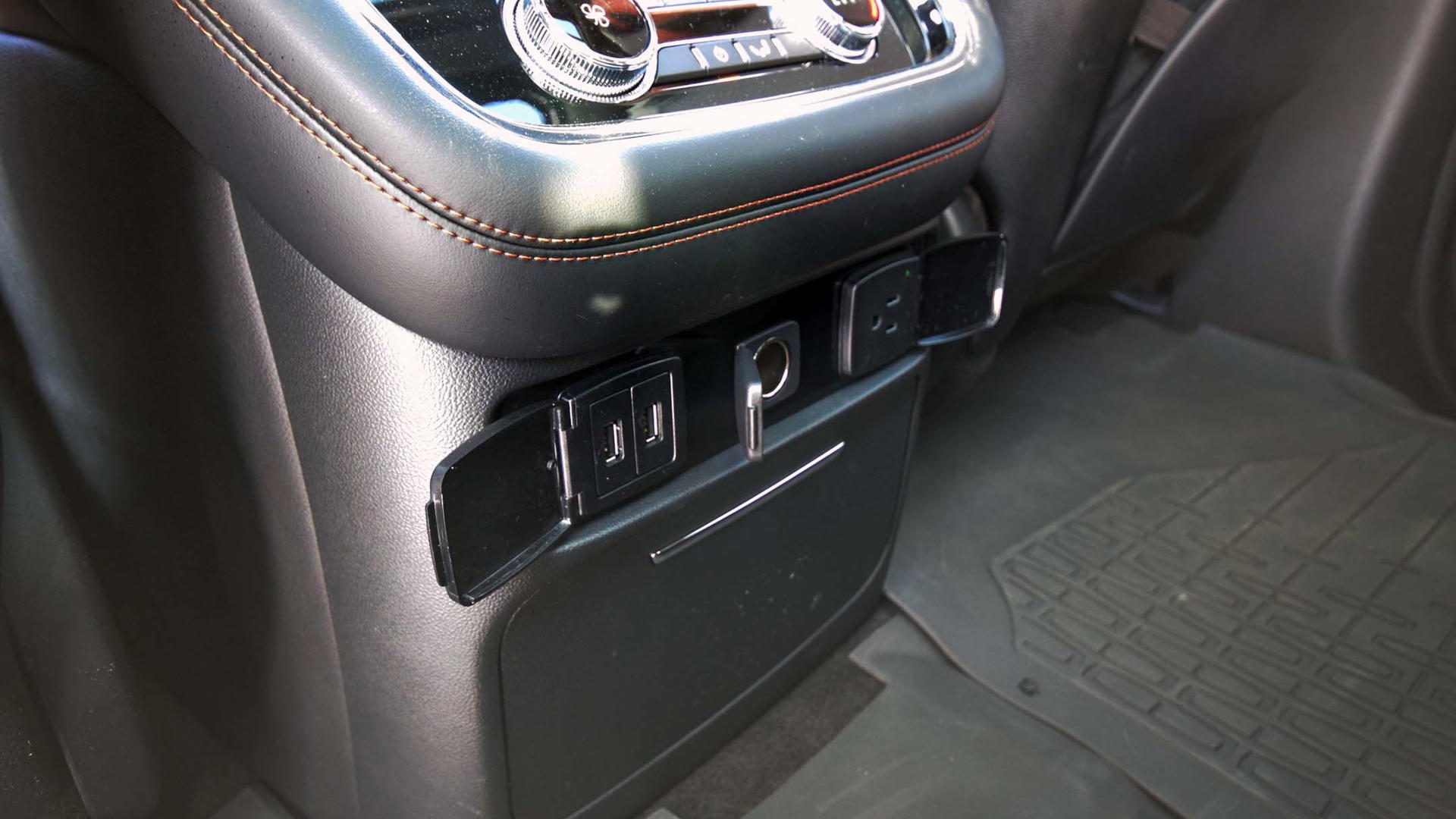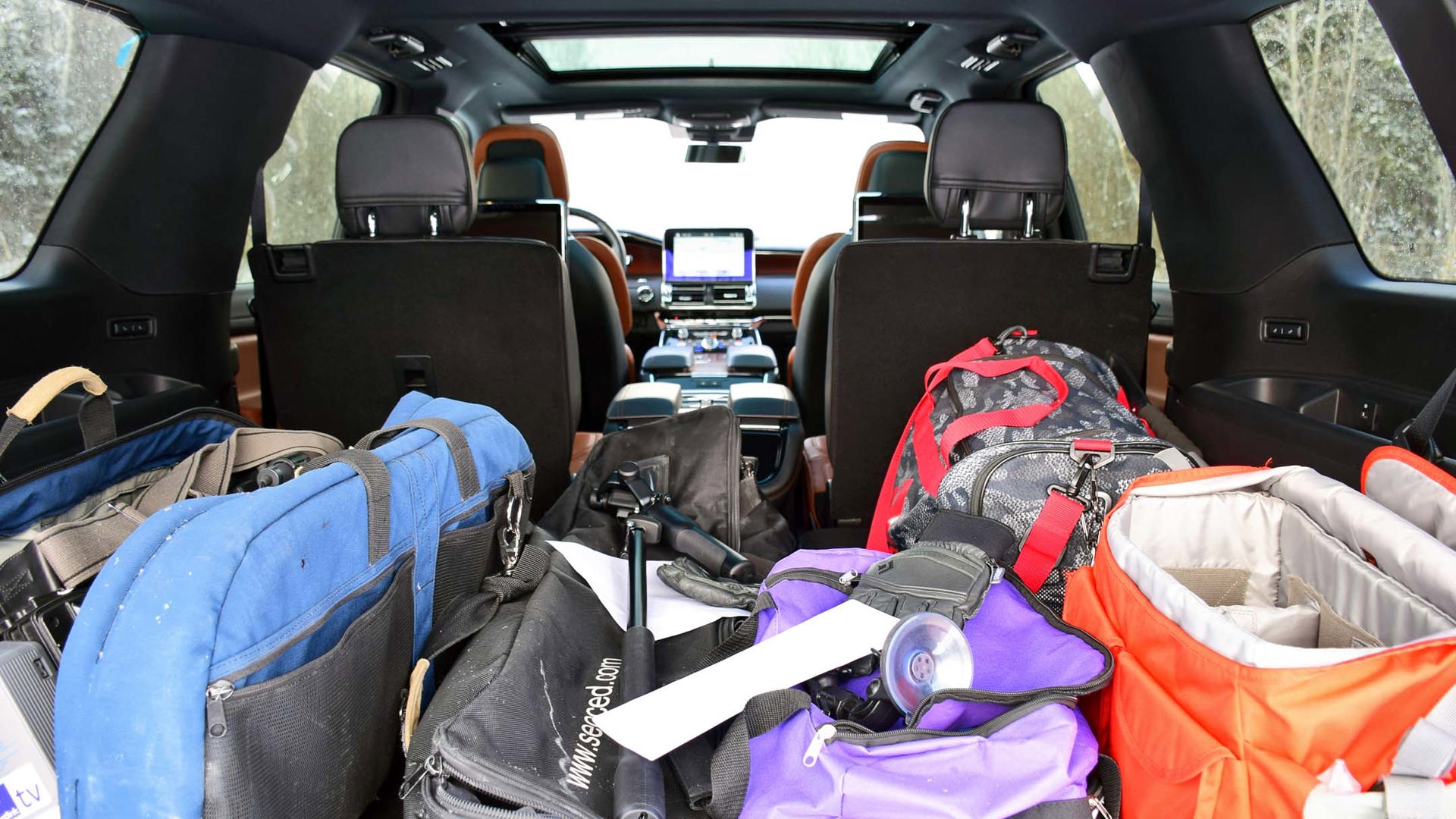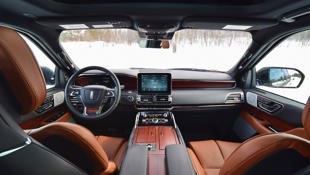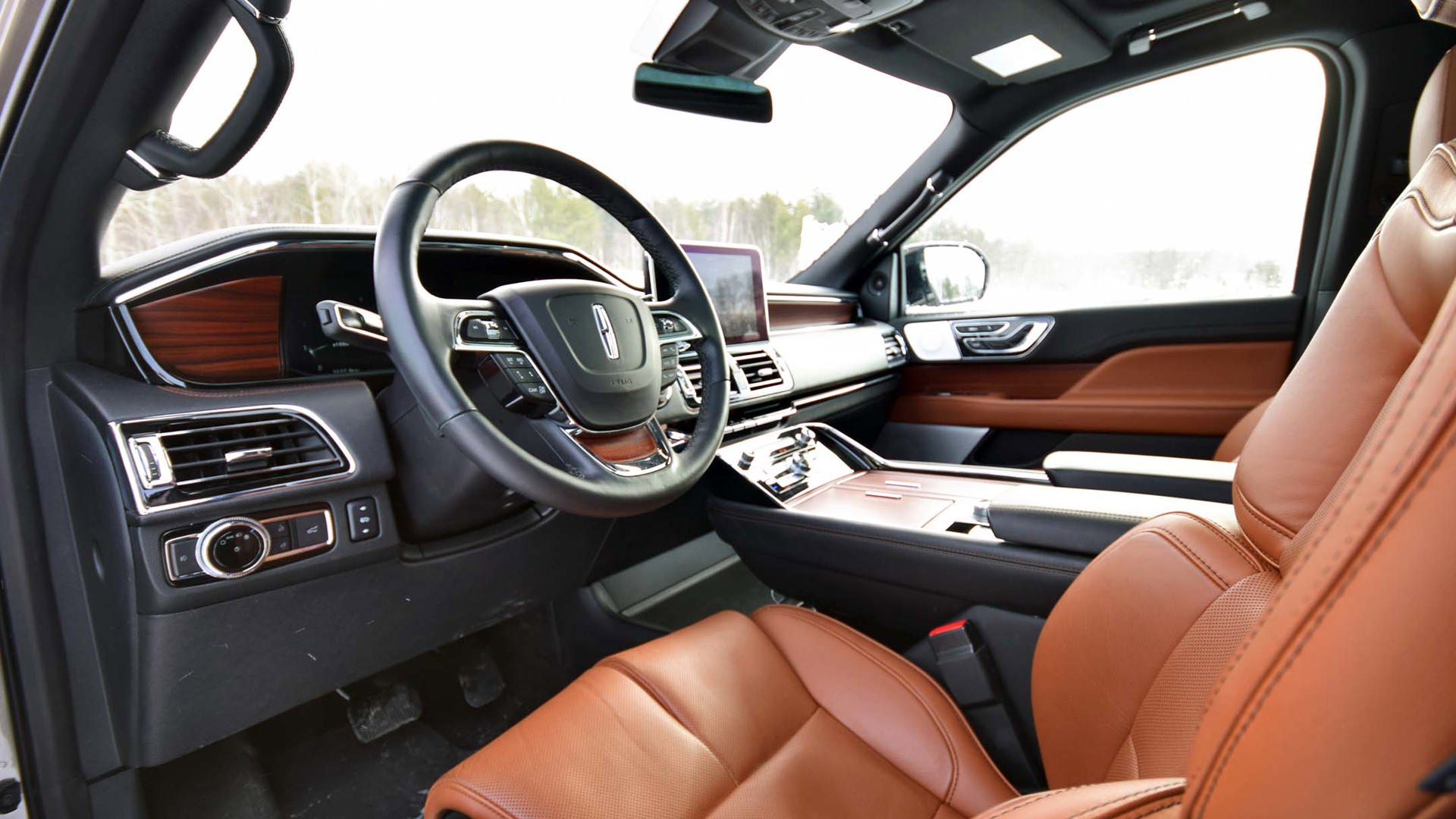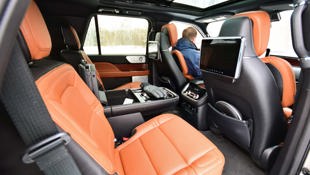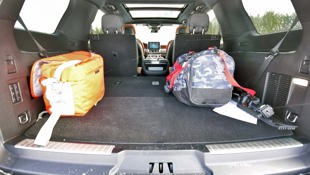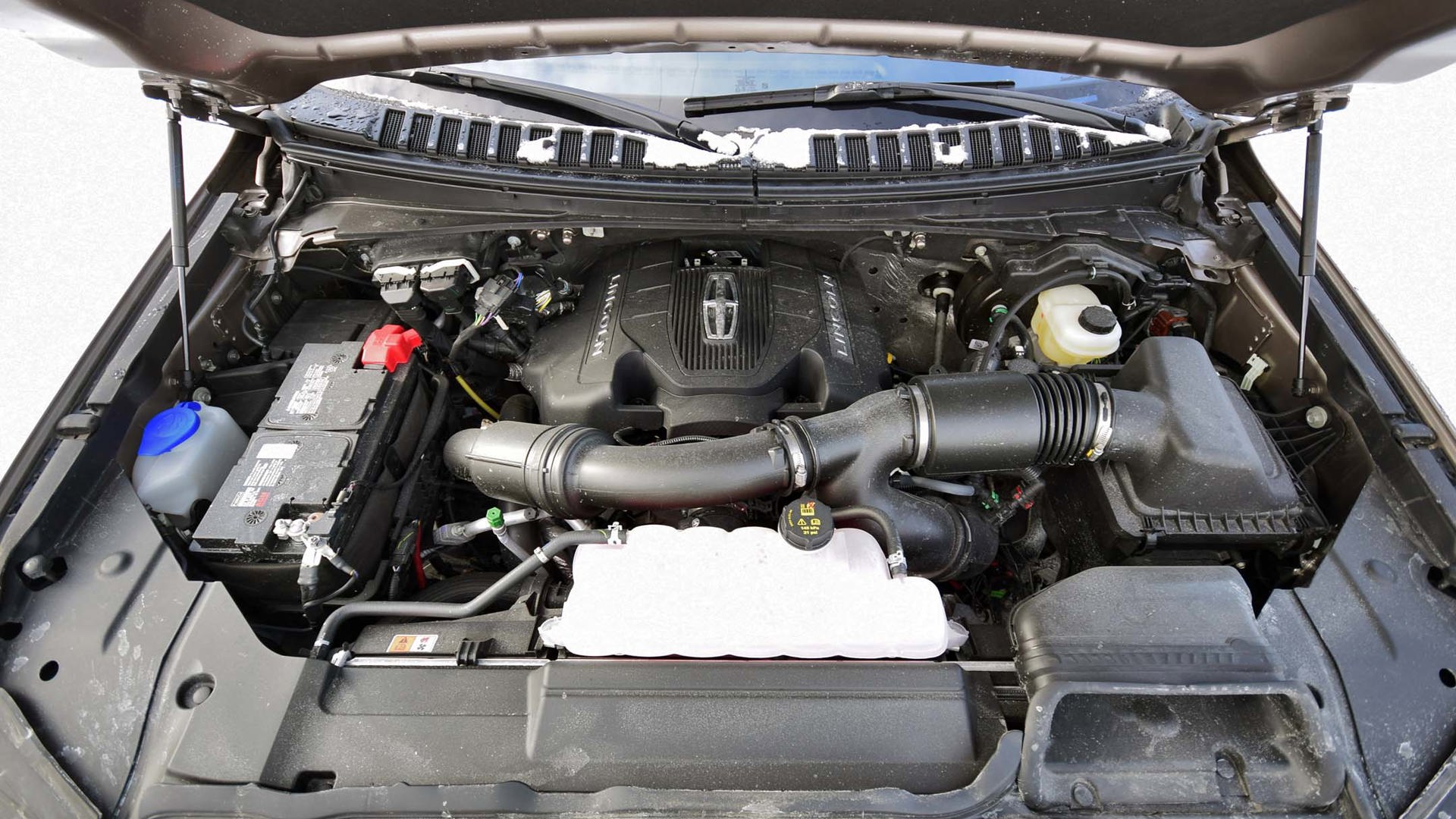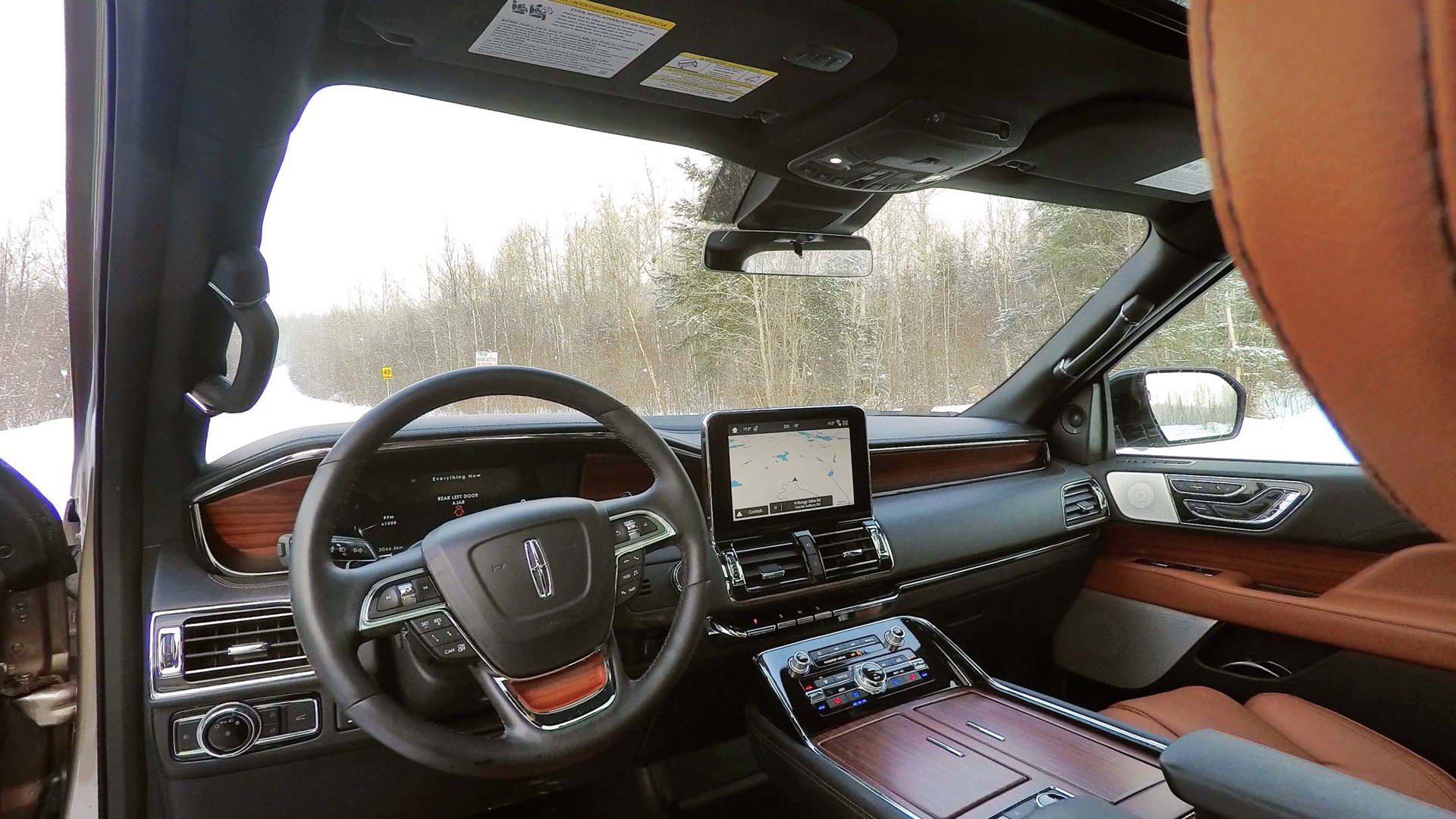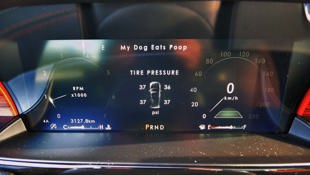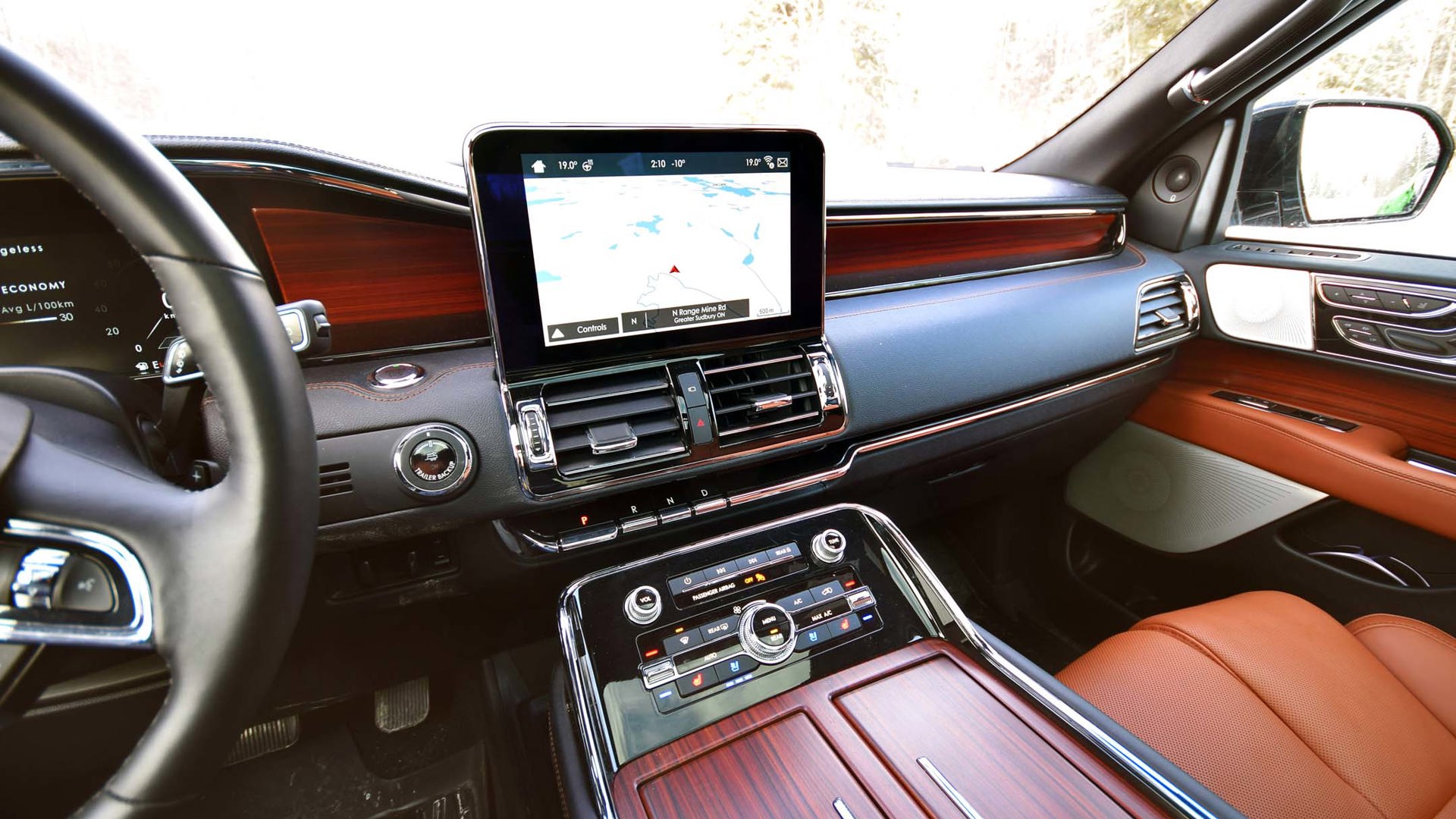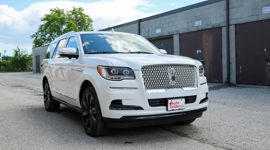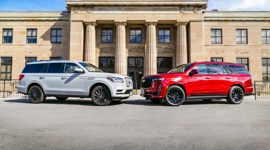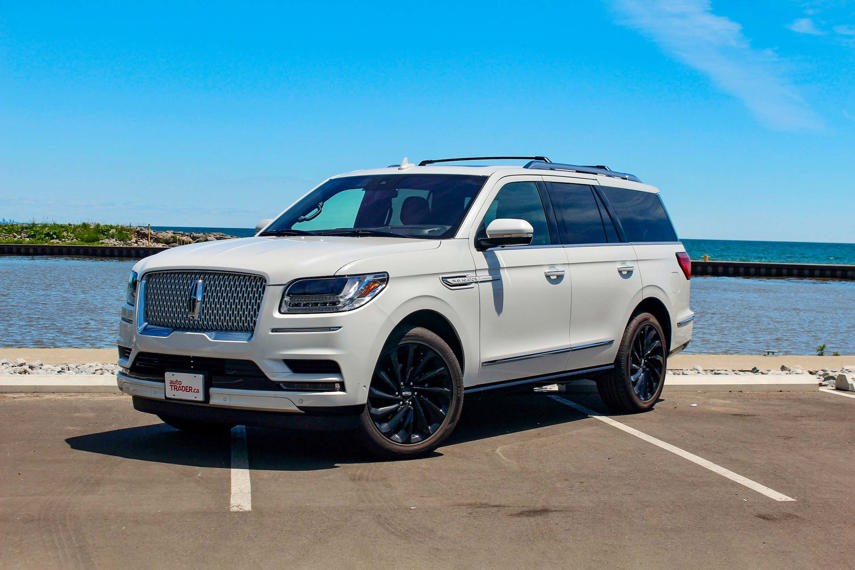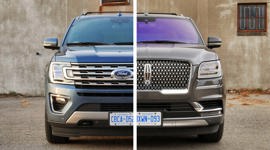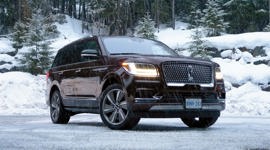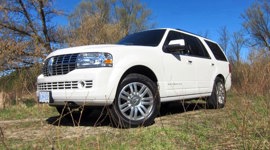 AutoTrader SCORE
AutoTrader SCORE
-
STYLING9/10
-
Safety8/10
-
PRACTICALITY9/10
-
USER-FRIENDLINESS9/10
-
FEATURES9/10
-
POWER8/10
-
COMFORT10/10
-
DRIVING FEEL8/10
-
FUEL ECONOMY7/10
-
VALUE8/10
Probably, a new Cadillac Escalade is being finalized as I write this. I’d wager a princely sum that near to that process, deep within Cadillac’s headquarters, a designer and engineer are poking and prodding a copy of the latest, just-launched 2018 Lincoln Navigator. I’d bet they’re sweating, just a little.
With all hell breaking loose outside, I’m sitting high above the road, getting a massage from a climate-controlled seat.
The new Lincoln Navigator is excellent. It looks like a $100,000 vehicle. It’s equipped like a $100,000 vehicle. The feel dialled-in throughout is fully in stride with its price tag. It has a cabin like nothing else on the road, brimming with the latest in tech and connectivity. The latest in engineering and EcoBoost technology is on board, too.
Plus, this considerable cruiser winds up easily in top-three territory amongst the most comfortable vehicles I’ve ever driven, not to mention one of the largest I’ve ever been in without having to buy a ticket first.
After a mid-February week at the wheel, the Navigator’s appeal was most apparent while driving through yet another afternoon of near-whiteout conditions through the Muskokas, north to Sudbury via the Highway 69 snowbelt. Snow was slathering the tarmac, and wind gusts reduced visibility to near-nil every few moments. The roads were terrible. Most drivers (including plow drivers) had decided to stay home.
With all hell breaking loose outside, I’m sitting high above the road, getting a massage from a climate-controlled seat, hearing little from beneath as the tester’s (highly advised) Blizzak tires slice through ice and slush. It felt like I was driving a Russian ice-breaker up the highway.
The Navigator is big and heavy and long – this improves ride quality, but also predictability in slippery conditions. In careful driving, a loss of traction happens slowly, and with plenty of warning. Plus, the Navigator’s stability control has a near-zero-tolerance policy for slides: neutralizing even teensy slips that the driver barely notices, the millisecond they occur. I’ve driven through these conditions a zillion times, and few vehicles felt this locked-on and stable and safe.
After nightfall, the Navigator’s headlights are an excellent travel partner. Clean light, bright as a welding flash, drenches the road ahead and the treeline and culverts alongside. Reach is very good, as is the early engagement of reflective surfaces. There’s light galore wherever you need it, and eye strain is reduced as a result. There’s no washer system for the headlights though – so you’ll need to clean the lenses manually when required.
Ride quality is outstanding. It’s built like a pickup truck, not a car, so the Navigator feels extra dense and tough and solid. At times, you get just a whiff of that signature pickup-truck jiggle-jounce, though with Lincoln’s adaptive dampers literally fine-tuning for every inch of travel, the overall ride, 99 percent of the time, is incredibly creamy and smooth. It’s pickup-truck toughness in a machine that, mostly, rides like a leather-lined hovercraft.
On rougher camp roads or in-town roads, little manages to break that composure. At times, you chuckle driving the Navigator over the sort of “brace-for-impact” bumps that rattle lesser machines (and spinal components) into submission, as all you feel from the driver’s seat is a little squiggle-squirm from beneath. The Navigator’s ability to filter out roughness hurled its way is a marvel. Also, highway noise levels are kept nicely in check, with no need to raise your voice to converse with a nearby passenger, even at a good clip.
At writing, all Navigator grades come propelled by a 3.5-litre twin-turbo V6. It’s the same high-output version of this engine that you’ll find in the Ford Raptor. Output is rated at 450 horsepower and 510 lb-ft of torque, which means two things.
First, with all that torque available from comically low revs, there’s rarely a need to get the engine spinning past 2,000 rpm. Here, it’s smooth as glass, and barely makes a peep. There’s so much torque, right out of idle, that you virtually never need to apply more than a slight throttle squeeze to get moving, even hurriedly.
Second, should you squeeze the throttle to the firewall, the engine emits a pleasing roar, surging the hefty Navigator past slower traffic and 18-wheelers on a mountain of torque. It’s as punchy or peaceful an engine as you like – all up to your right foot.
The 10-speed automatic has a lot of gears, making some wonder if it would have trouble selecting the right one, or if it would spend too much time shifting. Neither is the case. In fact, this transmission skips multiple gears, most of the time; and if it were clumsy or confused, it’s so damn smooth you’d never know.
A four-wheel-drive system with low-range gearing sits beneath the floor. There’s no control over the 4x4 system possible outside of selecting one of Navigator’s built-in drive modes, which are toggled via a dial on the console. Modes include Normal, Normal 4x4 Auto, Deep Conditions, Excite, Snow Climb, and more. Each one automatically engages the appropriate 4x4 setting, including low-range, as needed.
The engagement of each drive mode is referenced by a mini-movie that plays in the all-digital instrument cluster – which itself is the worst part of an excellent interior. [Justin and my opinion on this differ greatly. – Ed.] Displayed colours are drab and include beige, the illumination that follows the virtual needles into the on-screen darkness looks weird and distracting, and upon selecting certain drive modes, the corresponding on-screen video displays a nebula. You know, the space kind. From space. This is a head-scratcher, maybe something to do with Matthew McConaughey?
Elsewhere, Navigator’s cabin goes its own way. It’s a big hop to get on board, though power-deployable running boards appear as you approach the vehicle, making it a cinch. Once seated, you’re in a world of wood and chrome and leather and stitching and metal and details and accenting. Notably, the cabin is absolutely massive – though designers used much of the space to showcase the upscale design and materials, as much as the abundance of room to stretch out. There’s so much storage, everywhere, that you could practically live in here. Not sure about you, but this Navigator has way nicer furniture than my living room.
The visual theme is like nothing else on the market. It sees numerous elements floating over other elements: seat pads that float over the main seat structure, a centre console – the size of a coffee table – floating over the floor beside you. One tier of the dash floating over the next. The list goes on.
Second-row seats are just as roomy as those up front, with two captain’s chairs flanking a giant, multi-function console (floating, of course) with infotainment controls, heaps of storage, and numerous charging ports. The tester included TV screens, remotes, and wireless headphones for mobile entertaining, too. Behind the giant second-row seating, there’s another seating row, or a massive cargo hold. You choose: just tap a button, and the third-row seats appear or disappear to taste.
Feature content? Yes – all of it. There’s little imaginable that the Navigator doesn’t include. Some favourites included the eardrum-goopifying Revel Ultima stereo, the massive panoramic sunroof, the massaging seats, and the clever wireless charging pad that keeps your smartphone secure and juiced. Whether you’re using your Navigator as a rolling relaxation chamber, social lounge, or audiophile listening space, you’re well equipped.
Obviously, the Navigator likes fuel. EcoBoost, 10-speed automatic, aluminum, whatever – this is a big heavy and powerful machine and drinks accordingly. Still, it wasn’t as thirsty as expected given the size and output, and the fuel tank is sized for a full-day of cruising or more, without stops to refuel. My mileage landed somewhere north of 16.5 L/100 km, though the engine hadn’t completed break-in, and it was the dead of winter. Your results will vary.
Two other notes. First, the Navigator is relatively easy to park, as vehicles the size of a shopping centre go. The turning circle is smaller than you think, and the wide-angle back-up camera (with a handy built-in washer system) ensures a clear and consistent outward view.
Second, despite all the tech and touchscreen functionality, Navigator includes a traditional console for climate control and audio system manipulation, complete with a radio tuning dial for easy access to the station of your choice. The touchscreen interface works nicely, but you can make selections the old-fashioned way, if you like.
Gripes? Dorky instrument cluster aside, my biggest was the brakes. They’re powerful, yes, but the feel at the pedal needs some work. Drivers need an inch of pedal input before anything happens at all, and another inch after that before the brakes really start to bite. Emergency stop, and the ABS is smooth, but you feel like the pedal is going to punch through the firewall. Funny, given how easy so much of the Navigator is to drive, that using the brakes gives you such a workout.
So, a few quibbles. But ultimately, Navigator’s pros will far outweigh its cons, and especially for the shopper after the market’s latest, and arguably, ultimate, luxury SUV.
| Engine Displacement | 3.5L |
|---|---|
| Engine Cylinders | V6 |
| Peak Horsepower | 450 hp @ 5,500 rpm |
| Peak Torque | 510 lb-ft @ 3,000 rpm |
| Fuel Economy | 14.9 / 11.3 / 13.3 L/100 km city/hwy/cmb |
| Cargo Space | 593 L / 2,928 L seats down |
| Model Tested | 2018 Lincoln Navigator Reserve |
| Base Price | $90,500 |
| A/C Tax | $100 |
| Destination Fee | $2,000 |
| Price as Tested | $100,300 |
|
Optional Equipment
$7,700 – Iced Mocha Paint $700; Technology Package $3,000; All-Weather Mats $150; Lincoln Play System $2,350; Perfect Position Seats $1,000; Roof Rails $500
|
|
